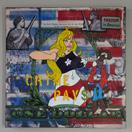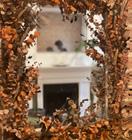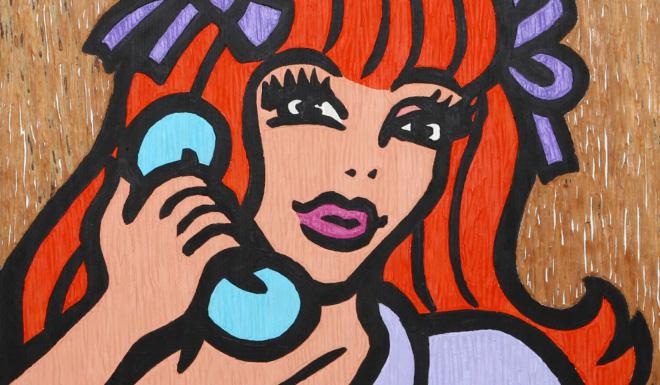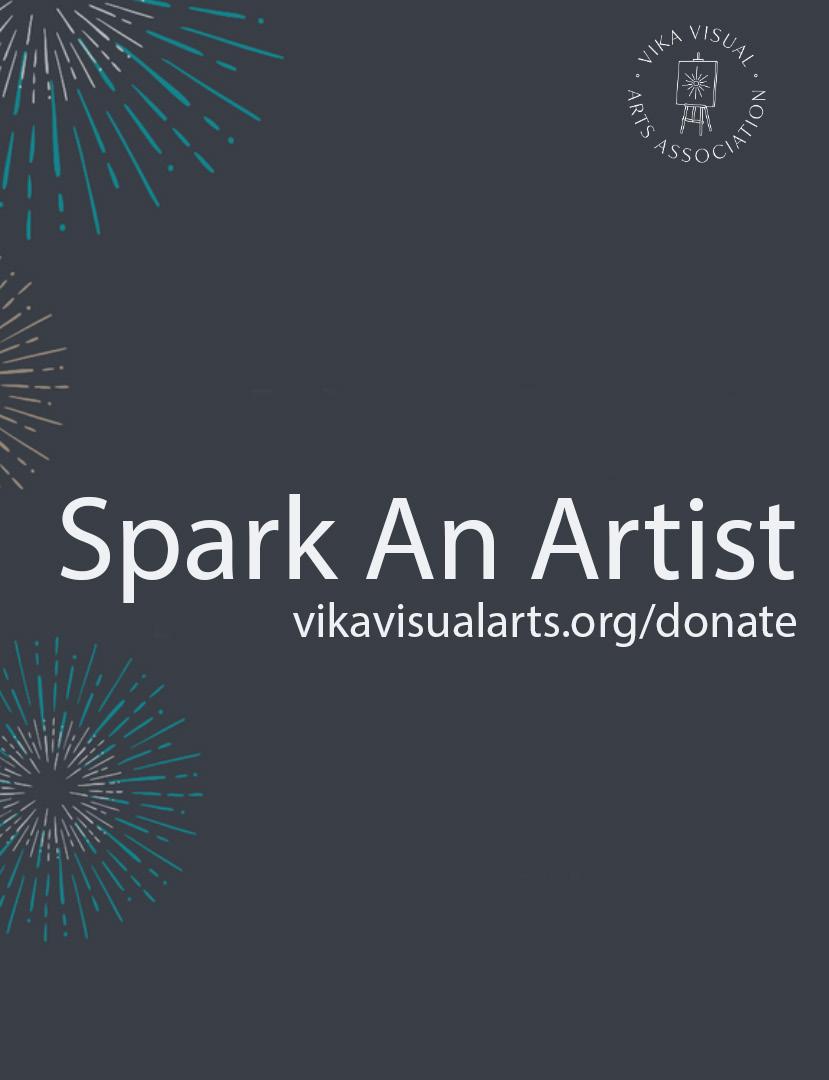
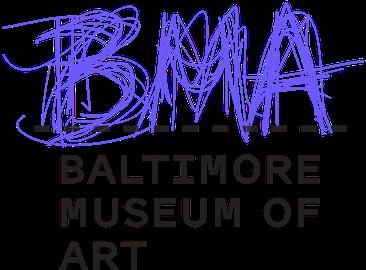

Deconstructing Nature: Environmental Transformation in the Lucas Collection August 27, 2025 — January 4, 2026






Deconstructing Nature: Environmental Transformation in the Lucas Collection August 27, 2025 — January 4, 2026


16 Art, Identity, and Rebellion
Discover Andrea Fort, known as Rebel Leona, as she shares her journey through art, identity, and rebellion, blending gestural abstraction and cultural narratives while championing creativity and inclusivity.
24 The Self-Taught Visionary Bridging Art, Identity, and Legacy
Sloan’s artistry defies conventions, blending life lessons and cultural exploration into powerful works that redefine identity and inspire future generations.
32 Art as Resistance and Reclamation
Anaya King uses graphite, charcoal, and other mediums to create art that celebrates Black joy and resilience while acting as a powerful form of resistance and reclamation.
40 Exploring Identity and Empowerment Through Art
Delve into Nic of Nic At Nite Art’s compelling journey, where contemporary art serves as a powerful medium for storytelling, sociopolitical dialogue, and the celebration of Black excellence and humanity.
50 Breathing New Life into Nature Through Sustainable Art
Explore how sustainable botanical artist Valencia Wilson transforms discarded plant matter and upcy cled materials into evocative artworks, celebrating nature’s resilience and the beauty of imperfection.
58 Rediscovering Narratives
Follow the artistic journey of Falere Fagoroye, whose work blends fine art and architectural insight to uncover hidden narratives, challenge social issues, and celebrate resilience through innovative use of materials and compelling storytelling.
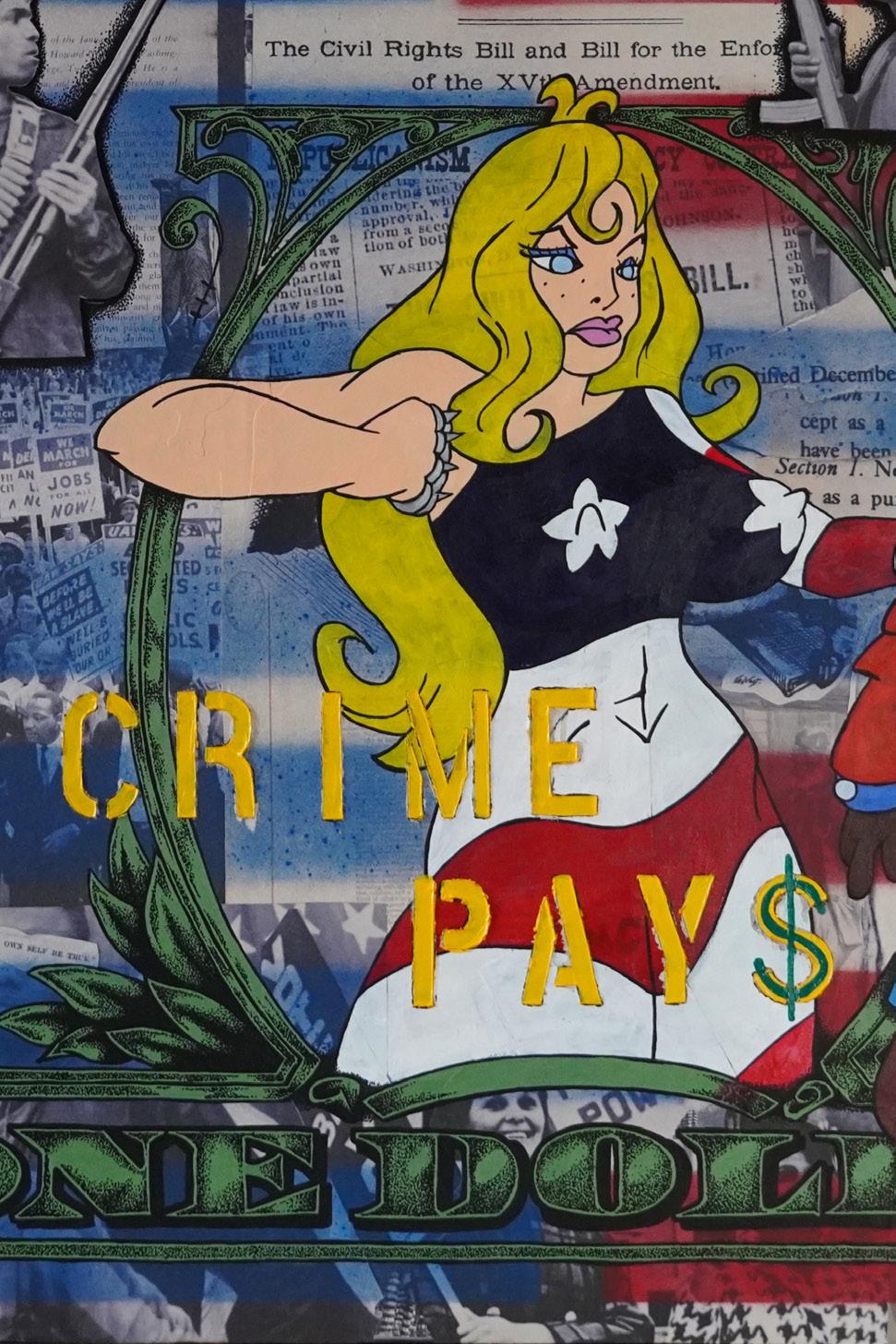
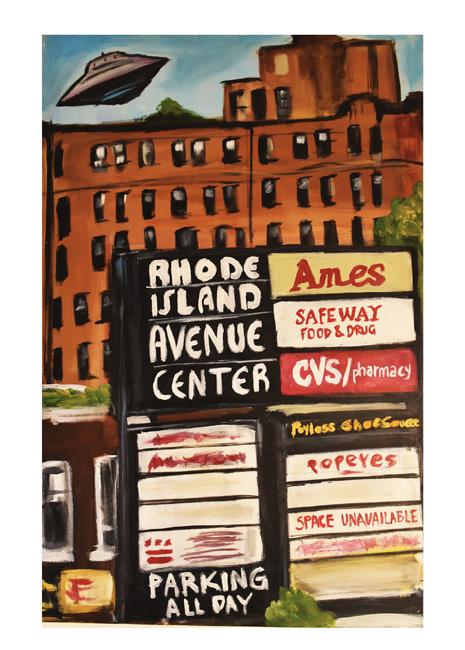

Iam thrilled to introduce you to the newest cohort of the Vika Visual Arts Association—six exceptionally talented artists whose unique and profound perspectives have left an indelible mark on our community. It has been a privilege to work alongside them, providing a platform for their creative voices to resonate. I couldn’t be more excited to share this special issue with you!
This issue centers around the powerful theme of Identity, Spaces, and Coexistence. Through their work and in-depth interviews—Falere Fagoroye, Andrea Fort, Anaya King, Nic at Nite Art, Sloan, and Valencia Wilson—dive into what these concepts mean to them personally and collectively. They explore how identity shapes their art, how spaces—both physical and emotional—influence their
narratives, and how coexistence within diverse contexts brings both challenges and beauty.
Over the past several months, these six remarkable artists have embarked on a journey of professional and personal growth. Working in a variety of mediums, they’ve used this time to explore their identities as artists and to navigate their rightful place in the ever-evolving art world. This issue showcases not only their extraordinary talent but also profound reflections on the intersections of their journeys and the theme that unites them.
Happy reading, and thank you for your unwavering support of emerging artists!

Devika Strother, Editor in Chief devika@artdictionmagazine.com
President Donald Trump has announced that he had fired Kim Sajet, the director of Washington, D.C.’s National Portrait Gallery. This move leaves the leadership of the gallery, which is part of the Smithsonian Institution, up in the air. Trump has been keeping a close eye on the Smithsonian since returning to the presidency earlier this year.
In a post on Truth Social, Trump shared his reasoning: “At the request and recommendation of many people, I am hereby terminating the employment of Kim Sajet as Director of the National Portrait Gallery. She is a highly partisan person and a strong supporter of DEI, which is totally inappropriate for her position. Her replacement will be named shortly.”
Sajet has been at the helm of the National Portrait Gallery since 2013. Before that, she led the Historical Society of Pennsylvania and was deputy director of the Pennsylvania Academy of Fine Arts. The gallery is currently showcasing an exhibition titled “America’s Presidents,” featuring portraits of U.S. leaders, from Elaine de Kooning’s artistic take on John F. Kennedy to the iconic images of George Washington by Gilbert Stuart. Sajet once told The Guardian, “I want visitors to read the labels and understand they’re based on historical fact, not the curator’s opinion.”
Interestingly, the exhibit also includes a portrait of Trump. The caption notes his two impeachments—once for abuse of power and once for incitement of insurrection following the January 6 Capitol attack. It also mentions his 2024 comeback victory, making him the second U.S. president, after Grover

Cleveland, to serve nonconsecutive terms.
Trump’s statement didn’t provide specifics on why Sajet was fired, and the National Portrait Gallery hasn’t commented yet.
The Smithsonian Institution, which oversees the gallery, also manages other significant museums like the Smithsonian American Art Museum and the National Museum of African American History and Culture (NMAAHC). Trump has been critical of the Smithsonian, issuing an executive order in March targeting what he called “anti-American ideology” in its museums.
“Once a symbol of American excellence, the Smithsonian has shifted towards a divisive, race-centered ideology,” the executive order claimed, adding that this approach undermines American and Western values.
Back in January, Trump also signed an order to end federal DEI (Diversity, Equity, and Inclusion)
programs. Following that decision, the Smithsonian began phasing out its DEI department.
After the March order, there were reports that Kevin Young, director of the NMAAHC, was quietly placed on leave. He officially stepped down in April.
Tony Karman Steps Down as Expo Chicago Director After 14 Years
Big news from the art world! Tony Karman, who has been the heart and soul of Expo Chicago for over a decade, is stepping down as director at the end of June. Don’t worry, though—he’s not going far. Karman will stay on as president in an advisory role while the search begins for a new director.
In an email to “friends and supporters,” Expo Chicago praised Karman for his “14 remarkable years as a driving force behind the fair.”
Reflecting on his journey, Karman shared, “When I founded EXPO CHICAGO in 2011, our ambition was to renew Chicago’s storied tradition as a preeminent art fair destination—to innovate, to establish enduring programming and partnerships, and to consistently support our exhibitors and the artists they represent. I’m incredibly proud of what we’ve accomplished and deeply honored to have worked with such extraordinary individuals to build this legacy.”
This marks the first big leadership change at Expo Chicago since its acquisition by Frieze in July 2023. Frieze had initially assured everyone that the existing teams at Expo Chicago and the Armory Show in New York would remain intact. While Nicole Berry, who directed the Armory Show, moved on earlier this year to join the Hammer Museum in Los Angeles, Karman stayed at the helm of Expo—until now.
Frieze itself has been in the headlines recently, too. Earlier this month, it was sold to a new company led by Ari Emanuel, who had originally acquired it through Endeavor Group Holdings. Now, private equity firm Silver Lake has taken over ownership, and the reported value of the deal was a whopping $200 million.
Karman launched Expo Chicago in 2012 as a fresh take on Art Chicago, a fair that ran from 1980 to 2011 and was once considered the top art fair in the U.S. Under Karman’s leadership, Expo Chicago grew into a major event, with its most recent edition last month drawing over 35,000 visitors and featuring 170 exhibitors.
Simon Fox, CEO of Frieze, had warm words for Karman’s contributions: “I want to thank Tony for his dedication, professionalism, and energy at EXPO CHICAGO. His tireless enthusiasm and support for both
the fair and the City of Chicago have been invaluable. I’m thrilled that he’ll remain involved during this leadership transition.”
Karman himself sounds optimistic about what’s next. “As I move into a new advisory role with Expo Chicago, I want to acknowledge the deep commitment Frieze has made to the fair and Chicago’s wider cultural landscape. I’m truly grateful to continue supporting the team as they shape the future of this incredible event.”
While this is the end of an era, it’s clear Tony Karman’s impact on Expo Chicago—and the art world at large—will continue to resonate for years to come.
Augmented reality (AR) is becoming more popular, and it’s starting to make a big impact on the art world. With headsets like the Apple Vision Pro and Meta Quest II becoming more common, experts believe AR could change how people view and buy art.
Will Shott, who owns a gallery in Manhattan, thinks AR could be huge for galleries. “I’m sure galleries with the right tools will start offering virtual tours of their shows,” he says.
Hal Bromm, a gallery owner with 50 years of experience in New York, agrees that AR could bring more people back to galleries. Over the years, he’s noticed fewer visitors, as people now tend to go to art fairs instead. But with AR and virtual reality (VR), people could take virtual tours of studios and see artwork in their own spaces before buying.
One exciting feature of Apple’s Vision Pro headset is its ability to

create avatars that mirror people’s facial expressions in real-time. Bromm sees this as a great way for artists, like Joey Tepedino, who lives in Pennsylvania, to connect with collectors in New York without having to travel.
AR also has some big advantages over regular video calls, like Zoom. During the pandemic, everything online looked the same size, making it hard to get a sense of how big a painting really was. With AR, you can “place” the artwork on your wall and see how it looks in your home.
Artist Adam Himebauch thinks AR could help as the art world becomes more online. Many people experience art through their phones, so he says it makes sense for curators and gallery owners to use AR to reach audiences.
While AR can’t fully replace seeing art in person, Shott says it’s still useful. “If you already know the artist and their style, it’s a good option and will become more common,” he explains.
That said, some collectors still prefer the old-fashioned way of living with physical art before buying it.
Bromm recently let a couple borrow two paintings to see if they liked them in their home, and he thinks it’s hard to beat that experience.
India Price, an art advisor, says AR is making it easier to see large or digital artworks in your own space. This could help people feel more confident about buying them. However, Martin Murphy, a VR expert, isn’t sure AR will replace in-person art experiences. He says most collectors still prefer traveling to see art and meeting artists in person.
There are also challenges with AR headsets. They often need to be customized for each user, which could make it hard for galleries to provide them. Plus, galleries would need extra staff to help people use the devices.
Still, Bromm believes AR isn’t just for younger people. “Every new technology has a learning curve, but it can also be fun,” he says.
Auction houses like Christie’s and Sotheby’s are starting to use AR to make their events more exciting. For example, Sotheby’s created Instagram filters so people could try on a royal tiara or see famous paintings before they went up for auction.
Price thinks live virtual auctions using AR headsets could be exciting but says it might take a while for the technology to catch on. Murphy adds that new AR systems are being developed, allowing large groups of people to join interactive experiences at the same time. This could make AR more practical for galleries and museums in the future.
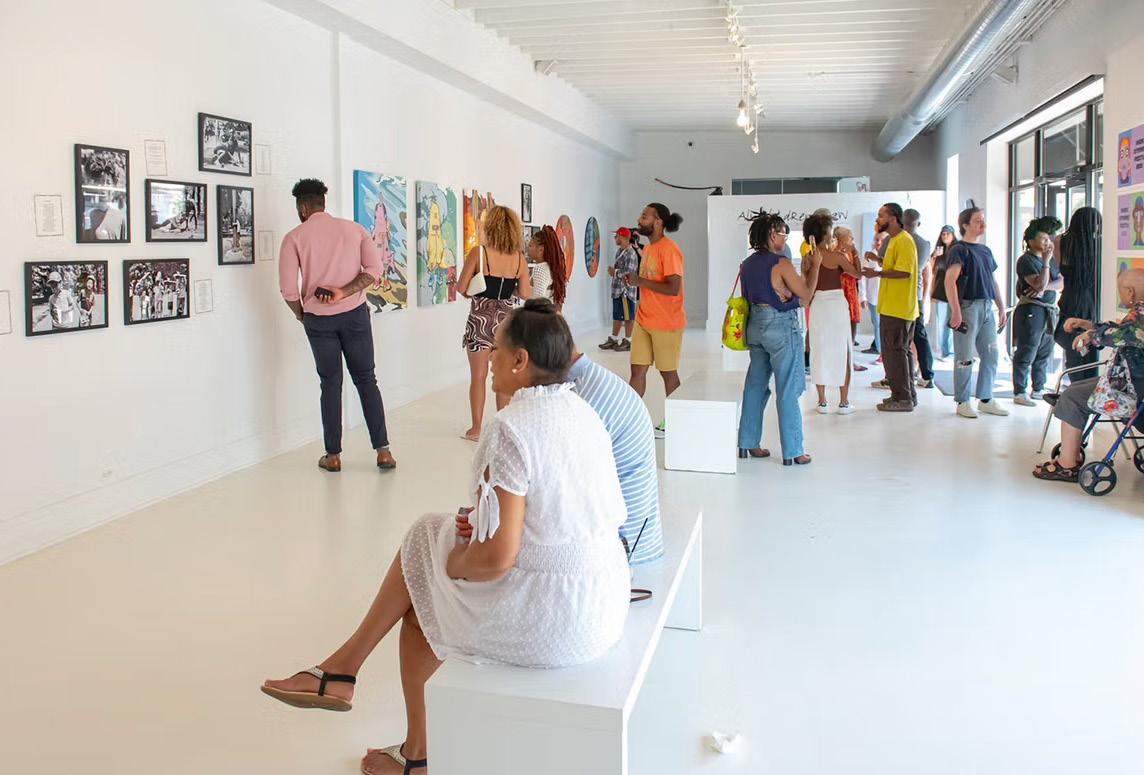
For now, AR and VR are exciting tools that could change how we view and buy art. While they might not replace in-person experiences, they’re opening up new possibilities for artists, galleries, and collectors.
Blanc Gallery: 15 Years of Celebrating Art and Community in
Fifteen years ago, Chicago chef Cliff Rome had a vision. He wanted to honor Bronzeville’s rich history of Black creativity and enterprise by opening an art gallery. On one corner, he had already revived the Parkway Ballroom, a legendary venue where Blues greats once performed. To further spotlight the neighborhood’s mid-century artistic legacy—which had been deeply impacted by segregation—he teamed up with real estate developer Eileen Rhodes to co-found Blanc Gallery.
From the start, Blanc was about
creating connections. Its first exhibitions featured artists like Olalekan Jeyifous, who won a prestigious Silver Lion at the 2023 Venice Architecture Biennale, and Amanda Williams, a 2022 MacArthur Fellow. Over the years, Blanc has showcased the work of influential Black artists and designers, from Norman Teague to Faheem Majeed, alongside emerging talent from Chicago and beyond.
“It’s been a place where artists who might’ve been overlooked found validation,” says Amanda Williams, who has been part of Blanc’s journey from the beginning. “And now, these younger artists you see there will undoubtedly become part of art history.”
Blanc celebrated its 15th anniversary this March with a special show, In Retrospect, featuring new works alongside highlights from its early
years. Eileen Rhodes, who played a key role in bringing the gallery to life, reflects on its journey with gratitude. “We’ve been lucky since day one,” she says. “We wanted to bring the neighborhood in and still be a serious, community-rooted gallery.”
Word of mouth has been key to Blanc’s success, making it a hub for artists to connect with larger institutions and new opportunities. The gallery has partnered with the Museum of Contemporary Art Chicago (MCA), Expo Chicago, and the Chicago Humanities Festival on a variety of programs. Its indoor-outdoor space, complete with a lively summer patio for music and film screenings, fosters a sense of community and creativity.
Last year, Blanc hosted standout events like a public performance by the South Shore Drill Team, tied to Lawrence Agyei’s photography exhibition DRILL, and a lunch for local artists with Arthur Jafa during his MCA solo show. For Rhodes, moments like these are a reminder of why Blanc exists. “Seeing those conversations happen was one of those affirming moments,” she says.
Blanc has always been about giving artists freedom. “It’s part residency, part incubator, part gallery, part meeting space—it’s a little bit of everything,” says Faheem Majeed, who exhibited at Blanc in 2013. “There are no rules; it’s just respect.”
For his Shacks and Shanties project, Majeed transformed Blanc into an interactive space, inviting participants to contribute personal items to an installation. “It was an odd idea,” he recalls. “But they were open to figuring it out.”
This flexibility is what keeps artists coming back. “Blanc has always been a blank canvas,” says gallery
manager Jalen Hamilton. “It’s a place where artists can dream about how they want their work to be shown.”
Amanda Williams experienced this firsthand with her 2012 show Dreams in Jay-Z Minor, a collaboration with Krista Franklin. The exhibition included an ice sculpture of Lil’ Kim that they smashed with ice picks at the end of the night. “When you tell artists they have free rein, they take it,” she laughs.
Blanc’s small but passionate team, led by chief curator Rohan Ayinde and gallery manager Jalen Hamilton, continues to embody the spirit of experimentation and inclusivity that has defined the gallery from the start.
Faheem Majeed hopes Blanc gets even more recognition for its role in supporting Bronzeville, Black artists, and Chicago’s cultural scene. “It’s time they got their flowers,” he says. “Their commitment to artists and the community is something truly special.”
Blanc Gallery stands as a testament to what happens when creativity, community, and freedom come together. Here’s to the next 15 years of dreaming big.
The reopening of the Michael C. Rockefeller Wing at the Metropolitan Museum of Art has generated significant anticipation within New York’s art community. While much attention has been directed toward the architectural redesign and the newly curated displays of artifacts from Africa, Oceania, and the ancient Americas, the wing also introduces innovative contributions by contemporary artists. Among these is a compelling
project by Ethiopian American filmmaker Sosena Solomon, which subtly enriches the experience without drawing immediate attention.
Solomon dedicated two years to an extensive journey across sub-Saharan Africa, producing a series of short documentaries that explore the cultural significance of various sites. Her films present these locations through the perspectives of local communities who engage with them daily. A selection of three videos is showcased within the Rockefeller Wing, while additional content can be accessed via QR codes embedded in wall texts or directly on the Met’s website.
These films diverge from traditional museum presentations by eschewing archival footage, instead offering a modern lens on cultures whose histories are represented in the galleries. They spotlight sites such as royal burial grounds in Uganda, ancient rock paintings in Botswana, and bronze casting workshops in Benin City. Many of these locations, often inaccessible to tourists, offer rare insights into living heritage.
“The videos provide an additional layer of context that extends beyond even the most advanced descriptive labels,” explains Alisa LaGamma, curator in charge of the Rockefeller Wing and a specialist in African art. She conceptualized the project as a bridge between the collection’s historical artifacts and the contemporary landscapes they originate from. “I wanted to connect our visitors with the people who possess firsthand expertise in cultural-heritage preservation,” she notes, emphasizing the expansive perspective that the project offers.
The idea for integrating contemporary video originated during LaGamma’s 2020 Met exhibition,
Summer 2025 | 9 |
Sahel: Art and Empires on the Shores of the Sahara. A video featuring a historic mosque captivated viewers and challenged preconceived notions of cultural landscapes. Inspired by its success, LaGamma collaborated with the World Monuments Fund (WMF) to select filming locations that would highlight the diversity of sub-Saharan African heritage.
“People often view African monuments through a homogenous lens,” LaGamma reflects. “This project aims to challenge those perceptions by showcasing the distinctiveness of these sites.”
After enlisting Solomon for the project, the Met provided her with a team and a timeline of two years—one for filming and one for editing. Key collaborators included Stephen Battle, WMF’s senior regional director for African projects, who served as producer and accompanied Solomon on her travels. LaGamma and the Met’s director, Max Hollein, also participated in select visits.
The collaborative effort allowed Solomon to influence the selection of certain sites, including the rock-hewn churches of Lalibela and Tigray in Ethiopia. These sacred spaces, carved into stone and dating back centuries, remain active pilgrimage sites. The journey to the Tigray churches, which requires scaling cliff faces barefoot, exemplifies the profound spiritual and physical engagement inherent in visiting these locations.
“That experience was unforgettable,” Solomon recounts. “The physical challenge of the ascent was integral to understanding the pilgrimage, and capturing it on

film was equally demanding.” She recalls encountering an elderly woman with a cane navigating the climb with ease, underscoring the resilience and devotion of the local community.
Battle, who accompanied Solomon to all 12 sites, praises her ability to authentically capture the essence of these places. “The magic of the videos is entirely Sosena’s,” he remarks. “Her skill lies in putting people at ease and seamlessly capturing significant moments.”
Cultural Conversations and Shared Wonder
One of the project’s most memorable moments occurred in Ghana, where Solomon and Battle filmed inside traditional Asante buildings and met a resident priestess. “She entered a trance and communicated with spirits,” Battle recalls. “It was an extraordinary privilege to witness and document.”
The sense of wonder that permeated the filmmaking process is
palpable in the resulting videos, offering audiences a deeper understanding of the cultural narratives underpinning the artifacts displayed in the galleries.
“These films fill a critical gap in contextual information, grounding visitors in the environments from which these objects originate,” LaGamma observes. She envisions the project as a prototype for similar initiatives throughout the Met. “This approach could be expanded to other sections of the Rockefeller Wing or even the museum as a whole. It’s the next best thing to experiencing these places in person.”
Through Solomon’s work, the Rockefeller Wing integrates historical artifacts with contemporary storytelling, bridging the past and present in a manner that enriches cultural appreciation and understanding.
May 29–July 27, 2025
Amy Kaslow Gallery
Citizens across the globe reel from an explosion of autocracies in recent years that have left more countries run by roughshod regimes than governments protecting basic civil rights. This year, the United States became a dangerous headliner among rogue states snatching sovereignty from citizens by seizing stunning control over courts, commerce and communications.
If it’s in Central and Latin America where the equation is changing fast, it’s because American power has long pivoted the region. The US forced out military juntas, ushered in civilian elections, birthed fledgling democracies, occupied countries, made deals with dictators, started wars, ended wars, created wealth, stripped natural resources and wreaked chaos on the continent in little more than a hundred years. And as the Harvard Review of Latin America ReVista calculated some 20 years ago, by then the superpower had already launched an overthrow or intervention every 28 months since the late 1800s. ReVista did not account for all the foiled attempts, including the Bay of Pigs, nor did it envision the ongoing White House interest in annexing Canada or seizing the Panama Canal.
What’s trending today in the Americas, North-South, is a steep devolution from democracy with an unmistakably govern and grab modus operandi: that is, control the rule of law, amass mega wealth, and muzzle any cultural response.
Growing numbers of people push back despite what democracy watchdog Freedom House calls the “retaliation designed to silence public outcry.” Much covered in the daily news but even more unreported are public demonstrations, boycotts, battles for fair judicial rulings, and everyday interactions of people
somehow standing up for their rights. Opposition meets harsh, violent, even fatal responses to their protests, and they press on. Published just before DOGE targeted Freedom House and reduced it to a skeletal staff, the global group released its 2025 survey quantifying and spotlighting human resistance as the only way to reverse the drastic decline of freedom in the world.
When civil society suffers, the creative response is often the most poignant and powerful. Of course, autocrats target art, media and culture to eliminate distractions from their message, to ensure sameness without challenge. Indeed, what an artist sees, creates and expresses draws popular appeal, and commands some sort of reaction. The tyrant shuts it down.
Our roster of nine leading artists shows us the stirring and often stunning effect of resistance. Hardly exhaustive, the exhibition calls on some of the finest creatives in the Americas whose works are significantly representative of popular sentiment. Our accompanying storyboards provide essential context. And, for viewers interested in learning more, the gallery offers a list of well-vetted resources to explore.
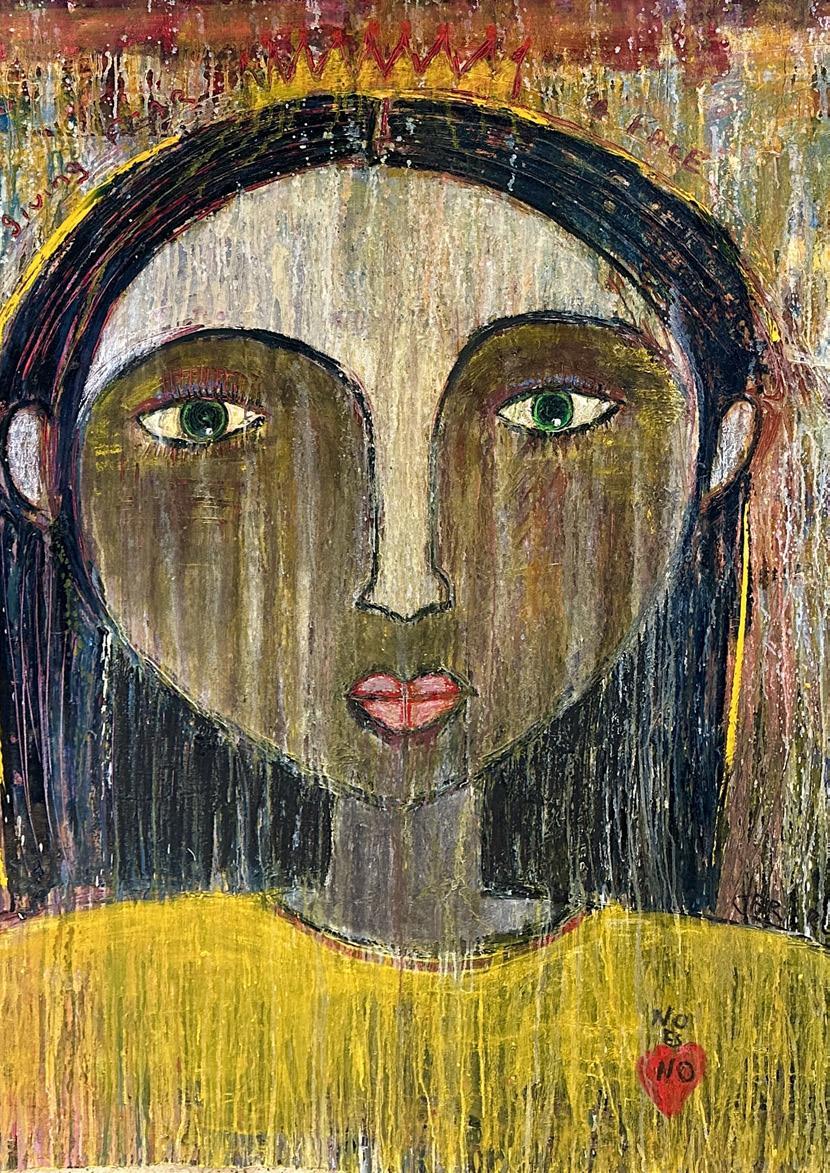
More than a collection of images, this exhibition weaves a narrative that bridges past and present, offering a sense of continuity and belonging. As an artist, my intention is to provide not just a visual experience, but an emotional journey—one that lingers long after you leave the gallery.
Art and Autocracy in the Americas proudly includes American sculptor Mimi Herbert; Cuban painters Jabriel Lafrance and Sandra Dooley; Colombian painter Fabio Mesa and Colombian muralist DJ LU; Haitian voodoo flag maker Valentin Valris; Mexican illustrator Juana Estrada Hernández; ChileanAmerican painter Francisco Letelier; and Peruvian pop artist Amapolay.
Infinite Itineraries
May 27–June 29, 2025
Washington Printmakers Gallery
Infinite Itineraries is a photographic journey about the people I’ve met and the places that have left a lasting impression on me. Through my lens, I capture a world in constant motion—moments where history, culture, and humanity intersect. Each photograph becomes a visual dialogue with the past, exploring the vibrancy of street life and the power of everyday moments.
Step into a world where every snapshot tells a story, and every frame preserves a fragment of history, inviting you to explore the infinite possibilities that travel, memory, and photography can offer.
Korofina, by Rama George Rama George, who works under the name Korofina, is based in Washington, DC, and her diverse and multicultural background significantly influences her artistic vision. Her work is a rich tapestry of global influences, featuring architectural and street scenes that evoke emotions while telling compelling stories in both color and black-and-white imagery.
Tom Haugomat & Anuj Shrestha: Cities of Love
June 6–June 29, 2025
Paradigm Gallery + Studio
Paradigm Gallery + Studio is pleased to present Cities of Love, a transatlantic-inspired exhibition curated by Jeroen Smeets, founder and curator of The Jaunt traveling artist residency program. In Cities of Love, The Jaunt and Paradigm Gallery have invited the Parisbased artist Tom Haugomat and the Philadelphia-based artist Anuj Shrestha to spend time and become inspired by each others city. As a true exchange, these artists can capture the essence and community that fuel these thriving hubs of artistic cultivation with an outsider’s perspective.
In October 2024 illustrator Tom Haugomat traveled to Philadelphia for his first visit to the City of Brotherly Love and spent his days walking amongst the historic streets, the brownstone houses, and parks and documenting the small and mundane moments of bliss within the city. Through his walks, Haugomat captured the everyday magic of Philadelphia through sketches of couples at the park or the skyline after a rainy day. While he explored the city he also met with illustrator Anuj Shrestha to learn more about the city through

the eyes of another artist who has worked with visual storytelling much like Haugomat himself. A month later in November 2024, Shrestha traveled to Paris, the City of Love, to explore the historic French quarters, its world renowned museums, and capturing the daily lives of Parisians. Shrestha blends the real with the surreal in delicate ink drawings with imagined creatures inspired by his travels.
The artwork of both artists now come together at Paradigm Gallery for the highly-anticipated exhibition Cities of Love. Haugomat has created an extensive series of his trademark miniature acrylic paintings on paper. Anuj Shrestha has created a series of line drawings and riso prints in his own signature style. The works combined showcase their unique eye for the surroundings in their trademark styles.
Both artists were invited to travel through The Jaunt, which is a unique art project that invites artists to spent time in a place they have never been before in order to become inspired. Since 2013, the proj-
ect has worked with more than 100 different artists over the years, and is excited to be back at Paradigm for a fourth exhibition together with Paradigm Gallery in Philadelphia.
Tom Haugomat & Anuj Shrestha: Cities of Love will be on view on the first floor of the Paradigm Arts Building (12 N 3rd St) from June 5 through June 29, 2025, and is presented as part of Paradigm’s yearlong 15th anniversary celebration.
August 24, 2024–August 23, 2026 Oklahoma City Museum of Art
This single-gallery installation explores French sculptor Auguste Rodin’s The Three Shades as well as his unique sculptural process. Often referred to as “the father of modern sculpture,” Rodin is considered one of the most renowned and influential French sculptors of the late nineteenth century. The Three Shades was originally created as part of The Gates of Hell, a monumental set of bronze entrance doors commissioned in 1880 for a decorative arts museum to be built in Paris. Though
plans to construct the museum were abandoned three years later, The Gates of Hell became a source of great creativity for the artist and spawned numerous enlarged sculptural groups, including The Three Shades and Rodin’s most recognizable work, The Thinker.
Olga de Amaral
May 1–October 12, 2025
ICA Miami
ICA Miami, in collaboration with the Fondation Cartier pour l’art contemporain, presents a major retrospective of the work of Colombian artist Olga de Amaral, bringing together more than 50 works from six decades, and featuring recent and historical examples, some of which have never been presented outside of her home country. The presentation at ICA Miami follows a tremendous success in Paris at the Fondation Cartier.
It reveals the breadth and complexity of Amaral’s practice, highlighting crucial periods in the development of her career as she moved from colorful explorations of the grid to experiments with materiality and scale.
Amaral’s sculptures and installations push the boundaries of fiber art, often combining weaving, knotting, and braiding to create striking abstract three-dimensional forms. Her earliest explorations, from the 1960s, frequently take inspiration from nature and feature unconventional weaving techniques. During the 1970s, Amaral created a group of monumental wall works; superimposing constructed layers of wool and horsehair enabled her to work at scale, evoking brick walls, leaves, and geological layers. Her investigations would also lead her to experiment with paint, linen, cotton, gesso, gold leaf, and palladium.
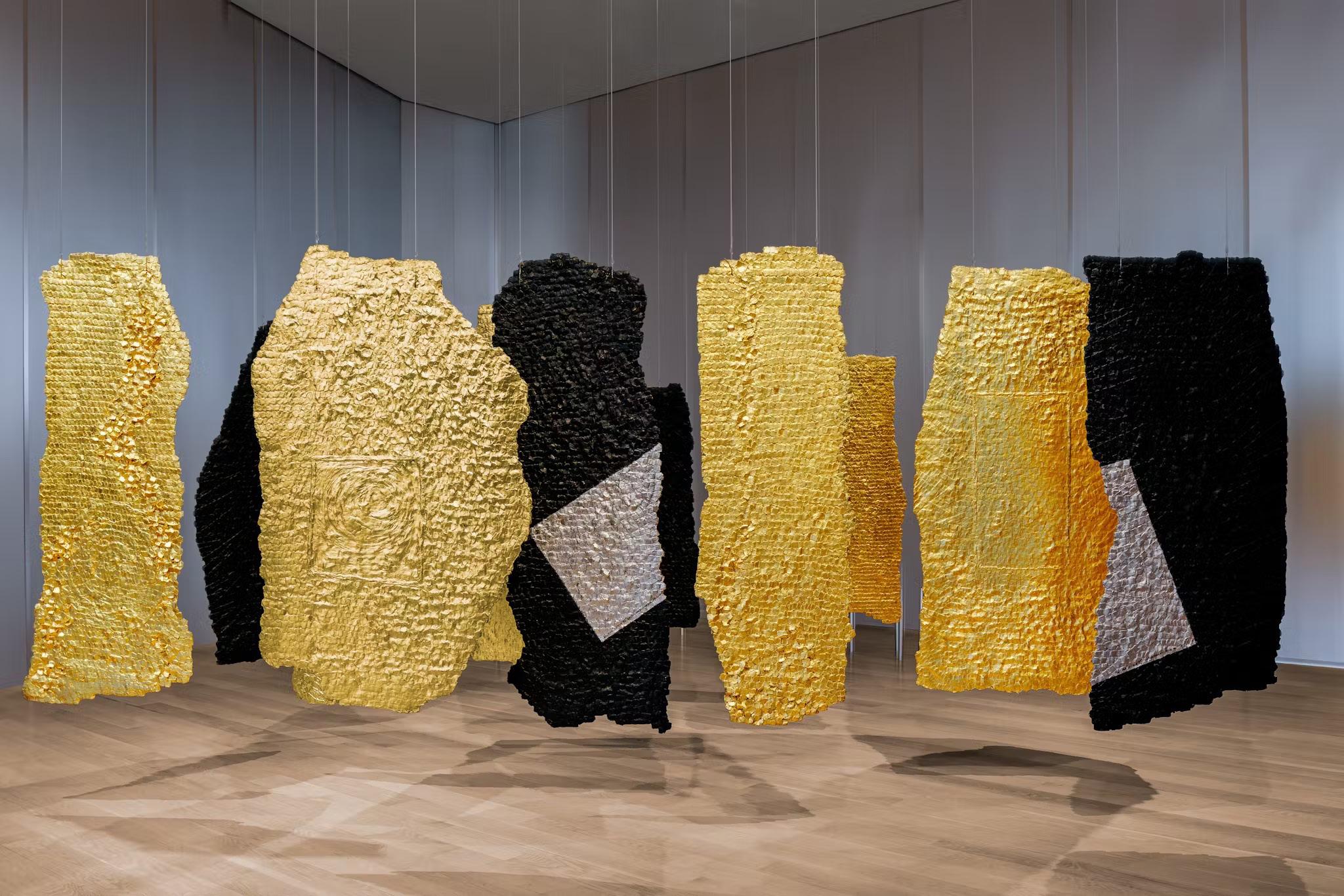
Complicating narratives of modernism and craft, Amaral’s unique sculptural language draws from Bauhaus Modernism and Constructivism along with pre-Columbian art and Indigenous weaving traditions. The exhibition includes the artist’s “Estelas” (1996–2018), vibrant goldleaf works that refract and absorb light, which recall pre-Columbian gold work reminiscent of funerary sculptures of pre-Hispanic archaeological sites. Works from Amaral’s most recent series, the cloudlike “Brumas” (2013–2018), are suspended from the ceiling. “Brumas” imbues geometric modernisms with the rich history and variety of landscape.
Olga de Amaral (b. 1932 in Bogotá) studied architecture at the Colegio Mayor de Cundinamarca in Colombia and textile design at the Cranbrook Academy of Art in Michigan. Recent solo exhibitions on the artist have been held at the Fondation Cartier pour l’art contemporain, Paris (2024-2025); Currier Museum of Art, Manchester, NH (2024); the Cranbrook Art Museum, Michigan (2021-2022); the Museum of Fine Arts, Houston (2021); and
Museo de Arte Moderno, Bogotá (2017).
Amaral’s work has been included in numerous group exhibitions internationally, most recently in “Stranieri Ovunque – Foreigners Everywhere,” La Biennale di Venezia, 60th International Art Exhibition, Venice, Italy; “Weaving Abstraction in Ancient and Modern Art,” Metropolitan Museum of Art, New York; “Subversive, Skilled, Sublime: Fiber Art by Women,” The Smithsonian American Art Museum, Washington D.C., USA, (all 2024); “Woven Histories: Textiles and Modern Abstraction,” LACMA, Los Angeles (2023), National Gallery of Art, Washington, D.C. (2024), National Gallery of Canada, Ottawa (2024), MoMA, New York (2025), among many others. Her work is held in major public and private collections worldwide, including Tate Modern, London; the Museum of Modern Art, New York; the Fondation Cartier pour l’art contemporain, Paris; the Musée d’Art Moderne de la ville de Paris; and the Art Institute of Chicago.
The exhibition design in Paris and
Miami has been created by award winning architect Lina Ghotmeh, founder of Paris based international practice, Lina Ghotmeh – Architecture. Ghotmeh has envisioned a vertical forest where the works appear to grow organically within the gallery, a direct reference to Amaral’s sources of inspiration. Ghotmeh recently won the competition to lead the redesign of the British Museum’s Western Range galleries.
Olga de Amaral was originated by the Fondation Cartier pour l’art contemporain with curator Marie Perennès and is co-presenting the exhibition at the Institute of Contemporary Art, Miami with Stephanie Seidel, Monica and Blake Grossman Curator, ICA Miami.
April 1–July 19, 2025 Grey Art Museum
This exhibition celebrates Anonymous Was A Woman (AWAW), a grant program for mid-career women artists living and working in the United States. Featuring works by 41 of the 251 artists who received the award in its first quarter century, it provides a timely opportunity to look back at a crucial period of art production by women, and to reflect on the program’s enormous impact.
Since its inception, AWAW has helped reshape the landscape of arts funding, filling a vacuum left after the National Endowment for the Arts terminated its grants to individual artists in 1994. Every year between 1996 and 2020, AWAW awarded unrestricted gifts of $25,000 to ten women artists over the age of 40; in recent years, both the amount of the award and the number of awardees have increased. Initiated and still led by photographer and philanthropist Susan Unterberg, who herself remained anonymous until 2018, the groundbreaking program refers to a phrase in Virginia Woolf’s es-
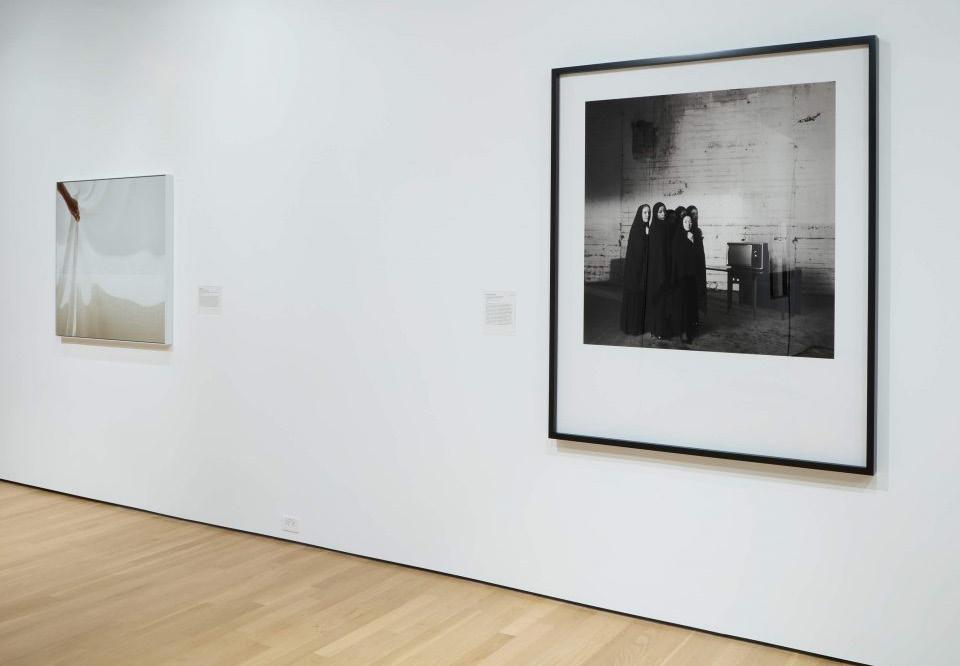
say “A Room of One’s Own,” which drew attention to challenges faced by women writers and artists in a patriarchal society.
True to its name, AWAW solicits recommendations from over 200 unnamed nominators and selects awardees via anonymous panels. Over the years, the grant, which provides both financial support and professional recognition, has been truly transformational for a number of the recipients.
The artworks on view span an array of media, subject matter, and formal approaches. Equally wide-ranging are the generational, regional, ethnic, and racial backgrounds of the artists represented. Guest curators Nancy Princenthal and Vesela Sretenović sought works created as closely as possible to the year the artists received the award.
Rather than choosing a thematic focus, the curators aimed to trace the development of contemporary art practice over the last twentyfive years, addressing issues of identity and community; the position of women artists in society;
the shifting value of craft; the expanding possibilities for installation and time-based media; as well as the many uses of anonymity. The opportunities for future interpretations of AWAW’s importance remain, like art itself, infinite.
October 18, 2025–March 1, 2026 Delaware Art Museum
The Norman Rockwell Museum assembled Imprinted: Illustrating Race with co-curator Robyn Phillips-Pendleton, a professor at the University of Delaware. The exhibition honors Rockwell’s powerful images supporting the Civil Rights Movement, displaying his work within a sweeping historical survey of American illustration that features illustrators including Romare Bearden, Emory Douglas, Howard Pyle, and Loveis Wise.
Illustration has been at the forefront of defining events in the United States, from the American Civil War and Reconstruction Era to the Harlem Renaissance and the Civil Rights Movement of the
1960s, moving forward to today. Imprinted examines widely circulated imagery, conceived and published over the course of more than three centuries, which has reflected and shaped perceptions of race across time.
Featuring over 100 artworks commissioned by publishers and advertisers, the exhibition traces harmful and prolific stereotypical representations of race that were historically sanctioned and prominently featured in newspapers, magazines, and books, on trade cards, posters, and advertisements, and on packaging and products. Imprinted also celebrates the concerted efforts of 20th and 21st century artists and editors to shift the cultural narrative through the publication—in print and across digital platforms— of positive, inclusive imagery emphasizing full agency and equity for all.
In assembling this show the Norman Rockwell Museum consulted a national advisory board of artists and scholars, including DelArt Curator of American Art Heather Campbell Coyle, who also contributed to the exhibition catalogue. While Imprinted is on view at DelArt, the Norman Rockwell Museum is hosting Jazz Age Illustration from November 8, 2025 – April 6, 2026.
Joan Mitchell: Uncovering 100 Years
February 2–July 20, 2025
The Fralin Museum of Art
How do works of art change over time? As pigments age, they change color. Dirt can build up as surfaces are touched by air. Museums need to decide whether or not to restore artworks to the artist’s original vision or leave the accretions of time in place.
In honor of the 100th anniversary of artist Joan Mitchell’s birth, museums around the country are installing her works simultaneously to celebrate her talent and broad influence. Mitchell, who lived from 1925 until 1992, was a remarkable artist both for her prolific output as well as her success as a woman within the male-dominated art world of the time. Today, we recognize Mitchell’s legacy as a leading painter of the Abstract Expressionist movement.

Joan Mitchell, American, 1925-1992. In-process conservation treatment photo of Neige, 1959. Oil on canvas, 77 ½ x 74 ¾ in (196.9 x 189.9 cm). Collection of The Fralin Museum of Art at the University of Virginia. Bequest of Buzz Miller. The Alan Groh-Buzz Miller Collection, 1999.12.57. © Estate of Joan Mitchell
In 2023, Scott W. Nolley, Head Conservator at the Smithsonian’s Hirshhorn Museum and Sculpture Garden, painstakingly restored two paintings by Joan Mitchell in The Fralin Museum of Art’s collection. Nolley cleaned Untitled in real-time as it was publicly displayed at The Fralin, offering both University of Virginia students and visitors a rare chance to witness a process of art restoration

that is normally conducted behind closed doors. This exhibition uncovers Joan Mitchell’s work—both through the conservation process and by revealing how conservators engage with scientific processes to preserve works of art for future generations.
How does the conservation change the appearance of these works? Does the cleaning affect how you perceive them? What might visitors think about these works in the next hundred years?
Vika Visual Artis Association, a nonprofit that supports artists in the DMV, is hosting “Identity, Spaces & Coexistence,” a group exhibit that explores the intricate relationships between self, environment, and shared existence. The six deeply thoughtful artists who will display their art include: Falere Fagoroye, Andrea Fort, Anaya King, Nic of Nic At Nite Art, Sloan, and Valencia Wilson. This is a unique opportunity to support the visual arts community and connect with fellow art enthusiasts and build meaningful community connections.
Andrea Fort, known in the art world as Rebel Leona, is an artist who weaves her multifaceted identity into a tapestry of bold, emotional expression. Her work, a blend of gestural abstraction, symbolism, and line art, challenges conventions while inviting viewers into deeply personal and cultural narratives. Through her art, Andrea celebrates her roots, explores her identity, and embraces her evolving journey.
Andrea’s artistic journey began in high school, where her talents in film and digital photography earned her first place in her school’s art show. “I was the ‘artsy’ one,” she recalls, “doodling abstractly in class and paying attention to the unseen details others might overlook.” Despite her creative inclinations, Andrea initially pursued anthropology and communications in college, finding structure and traditional academics challenging.
“Learning can’t be forced; it has to come from a place of love,” she reflects. Now, as a part-time student at the Washington Stu-
dio School working toward her Foundations Certificate, Andrea thrives in an environment that nurtures creativity. “The instructors, the staff, the vibe—it’s incredible. I feel the difference in my work, and others notice it too.” She also credits initiatives like Vika Visual Arts Association for supporting her growth.
Andrea’s love for art traces back to her childhood. Growing up in homes adorned with Peruvian textiles, African sculptures, and ceramics, she developed a deep appreciation for cultural artistry. “I love how, in non-Western countries, art is so effortlessly integrated into everyday objects,” she says. These influences, along with her sensitivity to music—“my first love”—form the backbone of her creative process.
Her experience as a third-culture kid has further shaped her artistic voice. Born to Peruvian parents and having lived in diverse environments, from the Andes to England and the U.S. East Coast, Andrea’s heritage is a mosaic of traditions. “I revel in all those influences,” she shares. “Heri-


tage, adopted, and inspired—they all come together in my work. Even the shattered pieces are part of the whole.”
For Andrea, art is rebellion. “Conformity, complacency, and capitalism are the enemies of creativity,” she asserts. Her work channels emotions and thoughts through a stream of consciousness. “I want my linework to tell a story, my symbols to surprise you, my colors to make you feel something in your gut,” she explains. “I’m asking you to focus, to listen, and to explore what lies beyond the surface.”
Her artistic alias, Rebel Leona, encapsulates her journey. A combination of rebellion and the Spanish word for lioness, it symbolizes her roar against silences that once confined her. “Art is philosophy,” she says. “When you take care of yourself, you rebel. And through my practice, I’ve found my voice.”
Andrea draws inspiration from untold stories, cultural idioms, guerreras, live music, and nature’s miracles. “Talk to me about overlooked histories, textures, or your fight in this existence, and I’m all ears,” she says. Looking ahead, Andrea is thrilled to announce her new studio at Red Dirt Studios in Mount Rainier, MD, a vibrant hub in the Gateway Arts District. “This is big for me,” she shares. “I can’t wait to get to work on some wild mixed-media ideas.” She’s also exploring oil painting and preparing a piece inspired by Mahmoud Khalil, while incorporating ancestral elements into her art.
Andrea’s journey is a testament to resilience, self-discovery, and artistic evolution. To follow her work and story, visit her Instagram @rebel_leona. Stay tuned for her upcoming website launch in August, and don’t hesitate to reach out with your own stories or ideas. As Andrea says, “No artist makes it alone.”



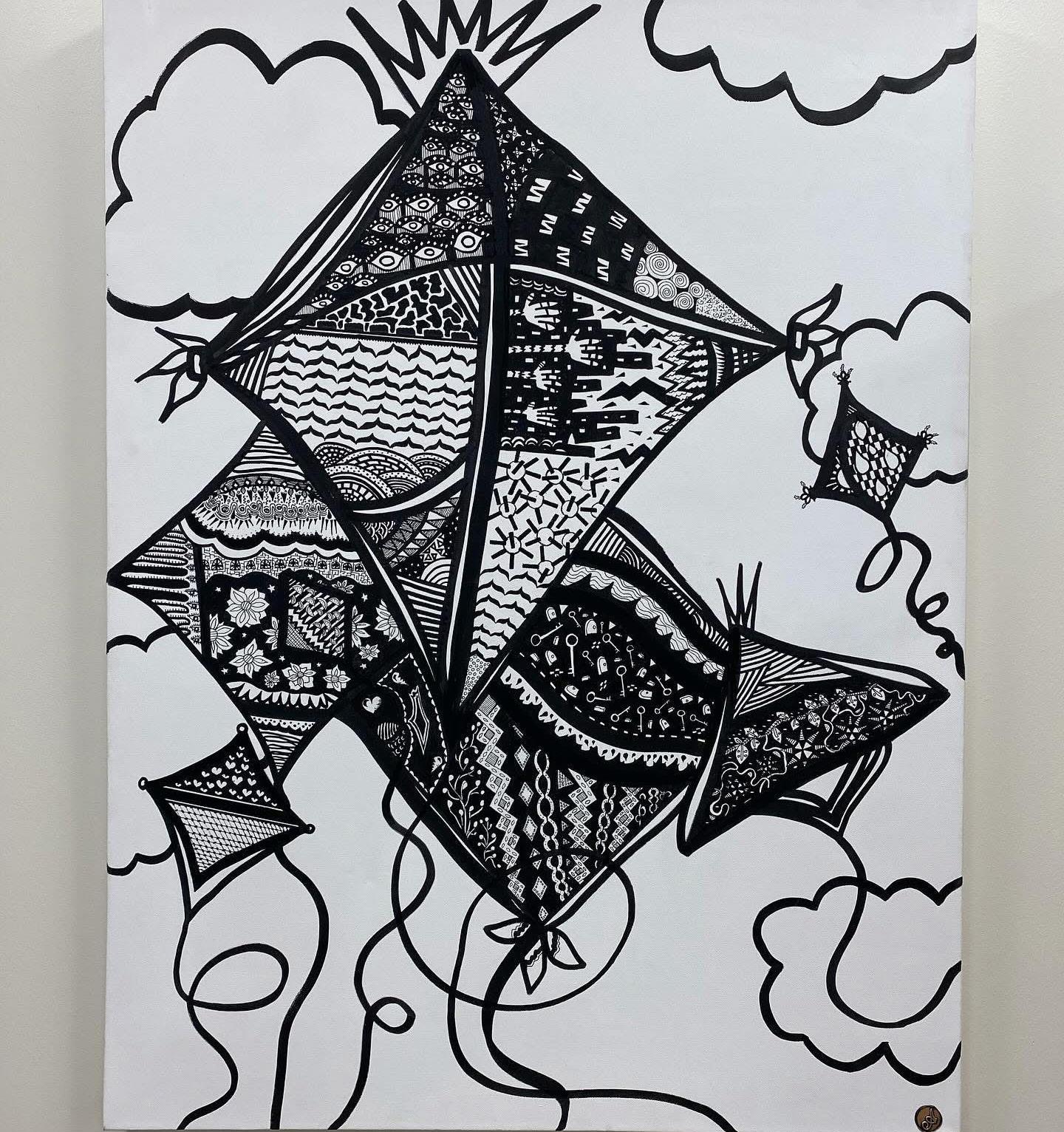

Artistic inspiration can stem from the most unexpected places, as demonstrated by Sloan, a selftaught artist whose journey has spanned decades, mediums, and philosophies. In a world where formal training often dictates the narrative, Sloan’s path proves that passion, life experience, and a relentless drive for self-expression can be just as transformative as any traditional education.
“I don’t have a traditional or formal education in art,” Sloan reflects. “But I believe that life itself is a powerful education in creativity, offering lessons across all spectrums.” Over the past ten years, Sloan has been refining a unique aesthetic, experimenting with various media, and most recently, diving into the intricate world of oil painting. This exploration marks a new chapter in an ever-evolving artistic journey. Sloan’s love affair with art began in third grade at Payne Elementary School, where Ms. Moses’ classroom became a fertile ground for creative expression. “I vividly remember gravitating toward assign-
ments that allowed us to draw or color our thoughts and answers—I always excelled in that format,” Sloan recalls. By the time peers and teachers began recognizing this talent, it was clear that art would play a significant role in his life. Yet, it wasn’t until the mid-30s that Sloan began exploring art more intentionally, discovering its depth and transformative power. Central to Sloan’s creative ethos is a profound reimagining of identity. “Blackness is often treated as a noun, a label used to classify people,” Sloan explains. “But in my experience, this classification can lead to misidentification and misclassification based solely on the color of one’s skin.” For Sloan, “blackened” more aptly describes the experience—a process shaped by burning, bruising, and refining. This nuanced understanding fuels a body of work that captures resilience and transformation. “Living with the title of ‘Black’ in America has been a continual process shaped by both pain and pressure. It’s through this process that I’ve developed the ability to think critically and explore my creative practice more deeply.”
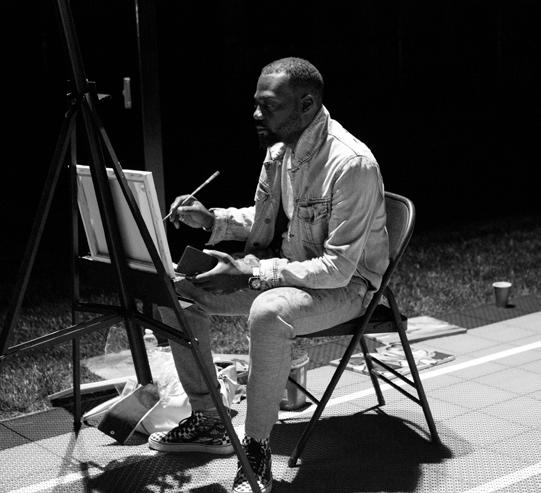
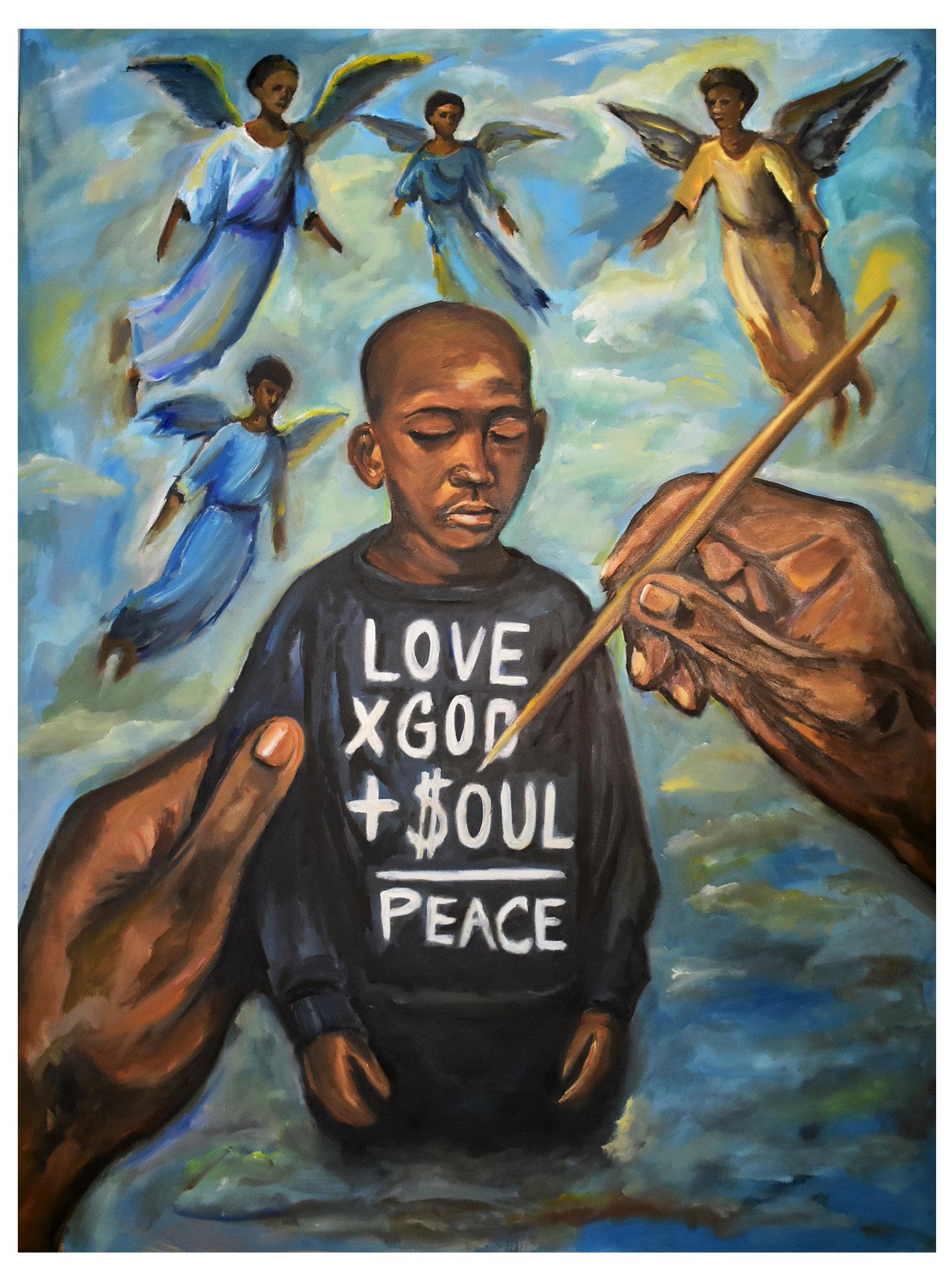
Sloan’s study of Eastern art and African civilization has profoundly influenced the approach to identity and self-expression. “We, as a people, are the emblems of art, science, and intelligence,” Sloan states passionately. By amplifying narratives that extend beyond the history of slavery, Sloan’s work highlights the African origins of civilization itself. “God’s greatest creation is us, and the more I evoke this higher consciousness through images and symbols, the closer I come to reflecting God’s image in this process of life.”
As an artist, Sloan’s mission extends beyond personal expression. “The one thing I’ve consistently prayed and worked for is space,” Sloan shares. This philosophy underscores efforts to create safe spaces for young artists in Washington, D.C., fostering environments where free expression thrives. “Space determines reality,” Sloan
explains, emphasizing the importance of intentionality, values, and work ethic in shaping these creative sanctuaries. Driven by the desire to leave a lasting legacy, Sloan’s work is an artistic documentation of life’s journey. “I’m inspired by the idea of living forever through the legacy my art will create,” Sloan reveals. This vision propels him forward, with a solo exhibit already in the works for September, offering an opportunity to witness the evolution of Sloan’s practice firsthand.
To see more of Sloan’s portfolio, follow him on his Instagram accounts @PersquareInch (personal) and @SloansStudio (business), as well as his website that is currently being updated SloansStudios.com.
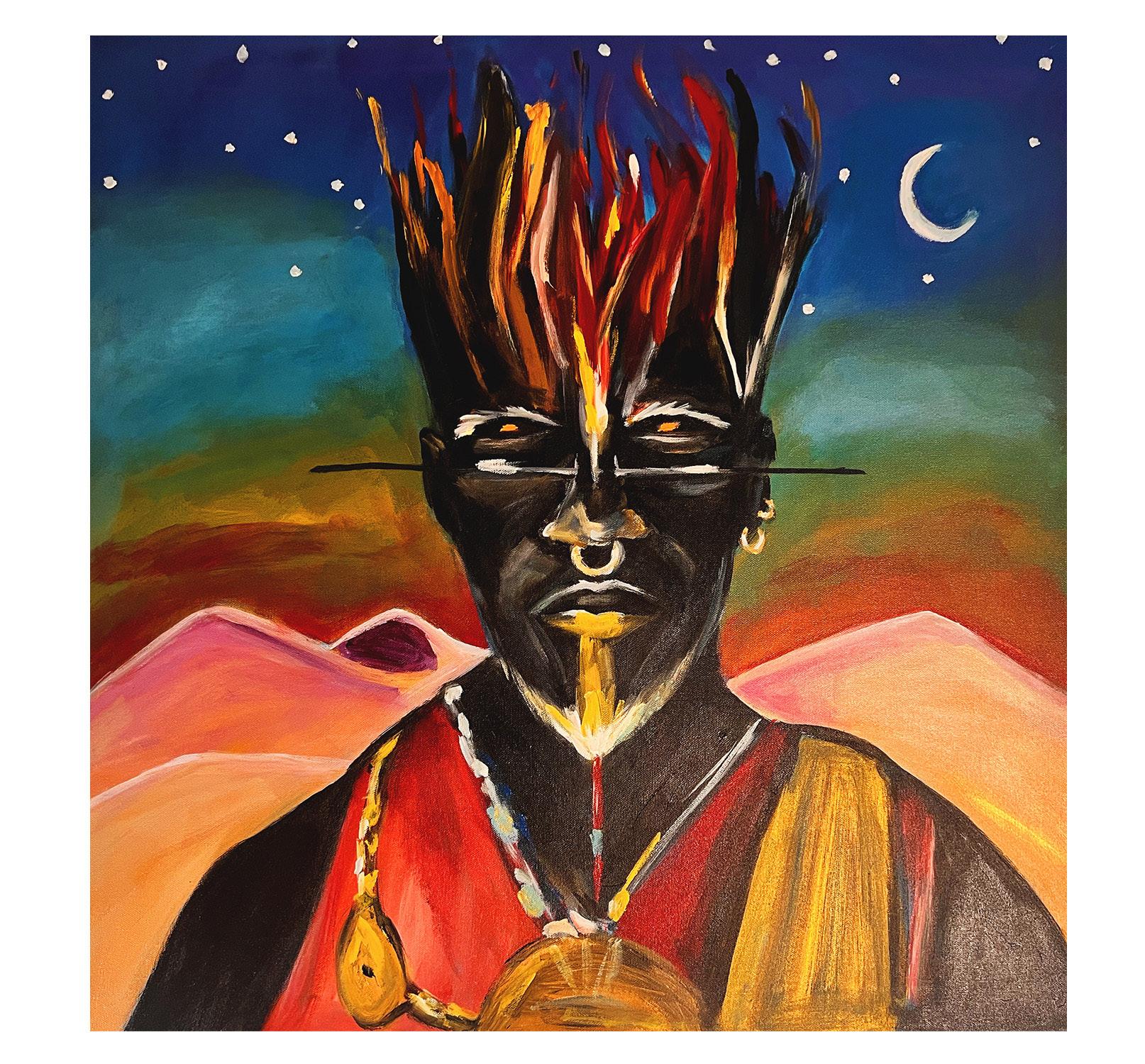
Man





Anaya King’s art defies boundaries and speaks volumes. As a selftaught artist who honed her skills through a summer program at The New School University and two years at a School for the Arts, Anaya’s journey is as unique as her creations. Her preferred mediums—graphite, oil pastel, colored pencil, and charcoal—allow her to express a range of emotions with raw, dramatic intensity. In this exclusive feature, we delve into the life, work, and mission of this extraordinary artist, who uses her talent to create spaces for joy, resistance, and belonging.
“I’ve loved drawing since I was seven,” Anaya reflects. “But I truly became interested in art when I started to see progress in my work. That’s when my perspective shifted, and I began to notice beauty in everything.”
Anaya’s artistic voice is deeply rooted in her experiences as a young Black woman navigating a world that often seeks to silence her. She started her career as a sketch artist, working primarily with dry mediums such as graphite and charcoal. These materials, she explains, “give a dramatic effect to the work and allow me to loosely express my ideas.”

Her creations are more than just visual statements—they are acts of resistance and reclamation. “As a young Black woman, my art is an act of resistance,” Anaya shares. “It allows me to speak boldly in spaces where I was once silenced by discrimination. Through every character and story, I assert my right to exist fully, joyfully, and unapologetically.”
Anaya’s work is also a celebration of Black joy and resilience. Her mission, she says, is to ensure that young Black girls see themselves reflected, celebrated, and empowered. “My experiences with racial discrimination taught me the importance of centering Black joy and belonging in my work. I want young Black girls to know their stories and creativity deserve to take up space and shape the world.”
This commitment to visibility and empowerment is a cornerstone of her work. “Resilience isn’t just about survival,” she notes. “It’s about creating spaces where we are seen, heard, and celebrated. I hope my art communicates to future generations that their stories, joy, and creativity are vital.” Her creativity is inspired by the everyday beauty and complexity of Black life. “These are things I didn’t always see reflected in the spaces I was pushed out of,” Anaya explains.
“I create to honor those stories, fill in the gaps, and imagine worlds where we are fully seen and celebrated.”
Anaya’s latest project exemplifies her mission. She’s working on a character-driven art series that reimagines young Black girls as heroes, adventurers, and visionaries.
“It’s a project close to my heart,” she says. “I want it to inspire joy, visibility, and limitless
possibility for the next generation.”
Andrea’s portfolio can be found online at https://gallery.instincx.com/ and on Instagram at @Always_anaya_.
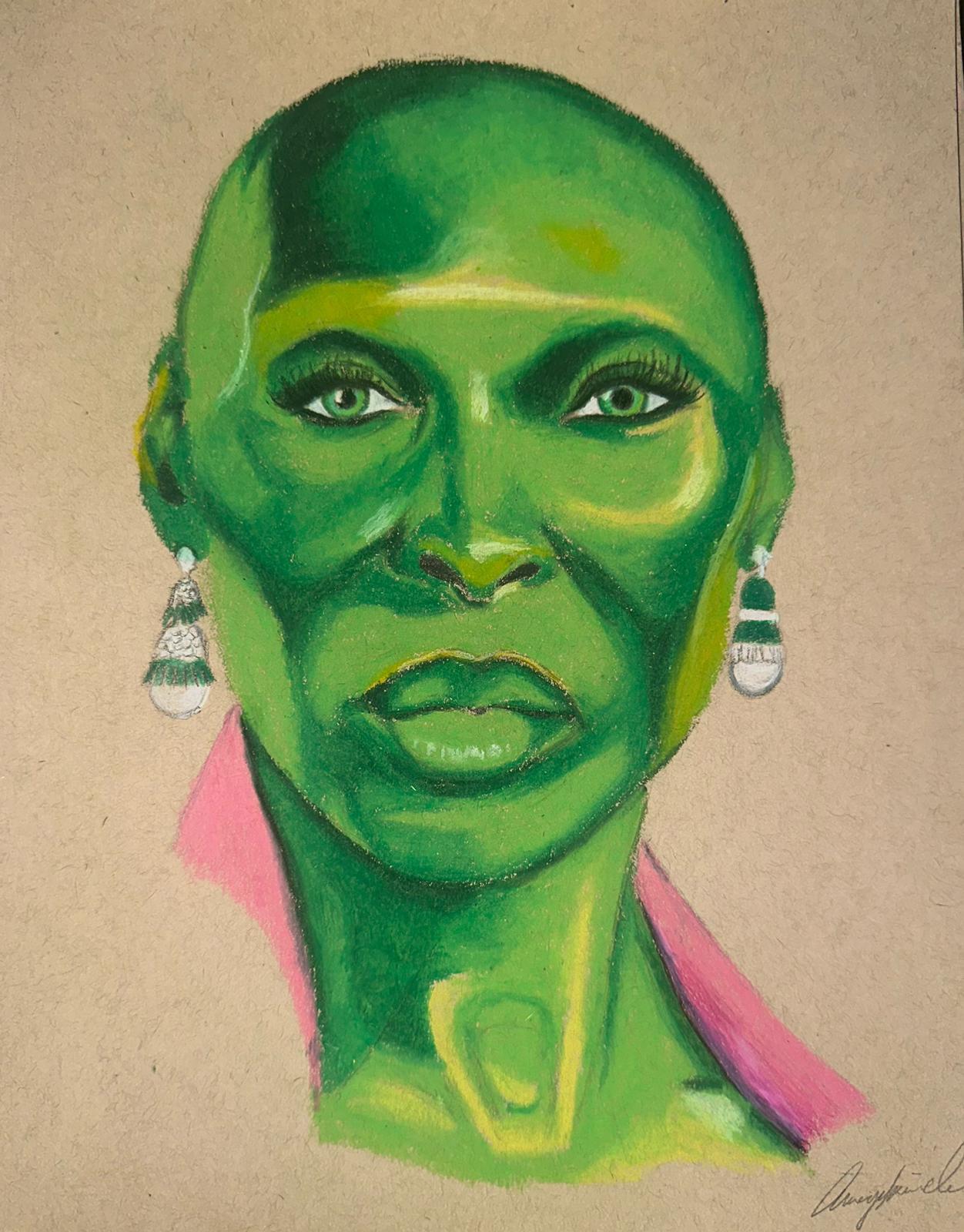

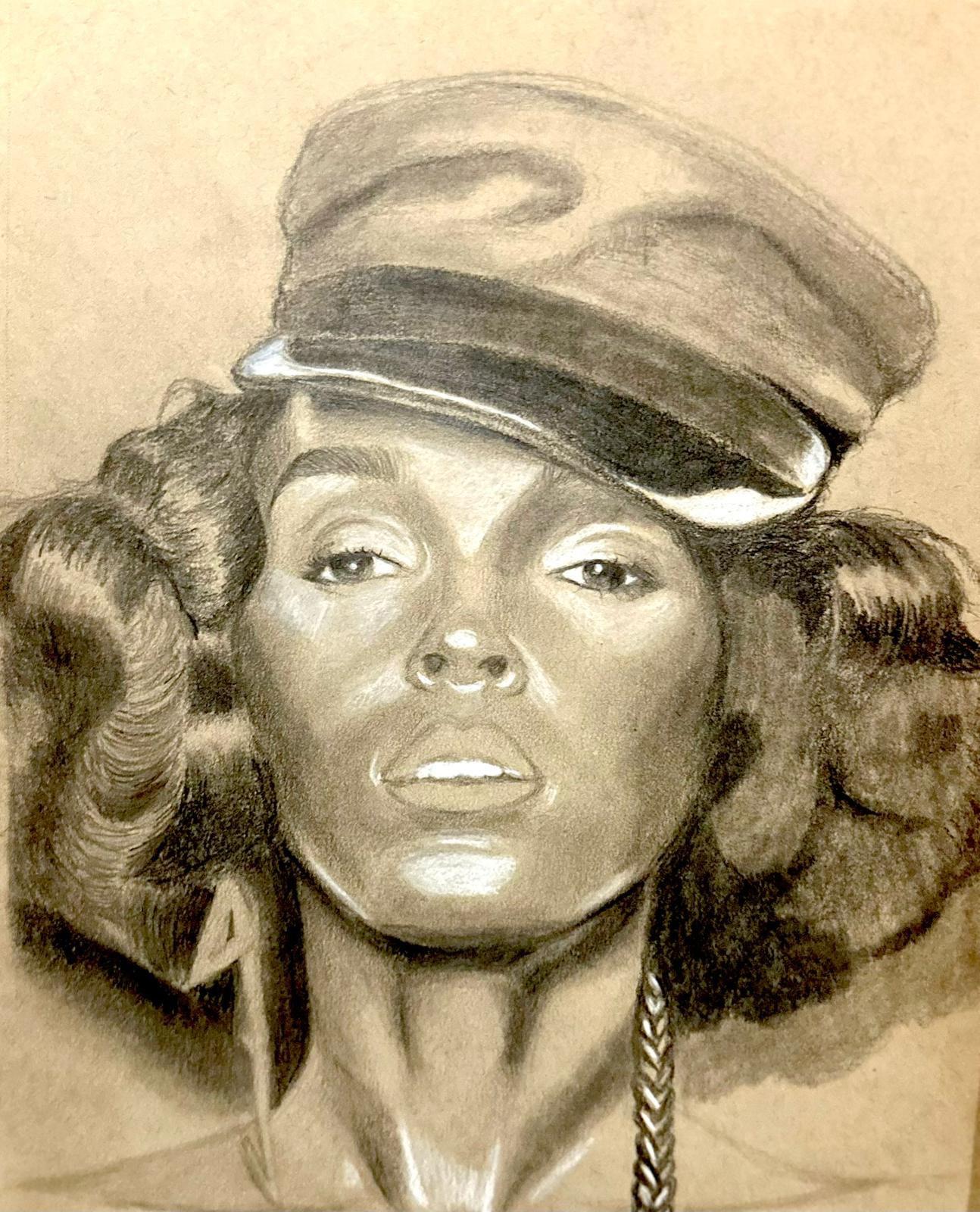


In the ever-evolving world of contemporary art, Nic of Nic At Nite Art stands as a beacon of storytelling and introspection. A self-taught artist, Nic’s work dives deeply into themes of identity, humanity, and empowerment. With every piece, she challenges conventions and invites viewers to engage in meaningful conversations about race, culture, and the human experience.
Nic’s journey into art began early. “I’ve been creating art from a very young age—4 or 5 years old,” Nic recalls. Without the formal training of undergraduate or graduate programs, she honed her craft through high school art classes and personal exploration. “I am what would be considered selftaught by most standards,” Nic explains, showing that passion and persistence can surpass traditional paths.
Central to Nic’s work is the careful balance between flawed humanity and Black excellence. “Think about who you may have looked up to as a child—a parent, a TV character, an athlete, a community leader,” she reflects. “Those are our superheroes. As children, we might have recognized their flaws, but as adults, we see how excellence and struggle coexist in everyone.” Nic channels this duality into her art, drawing parallels between Black superheroes and the everyday heroes within Black communities. “Black excellence includes our flawed humanity, embodying authenticity in many spaces,” Nic adds, emphasizing that imperfection doesn’t diminish the value of contributions.
Controversial imagery also plays a significant role in Nic’s portfolio. “Education and empowerment are a shared responsibility between the artist and the viewer,” she
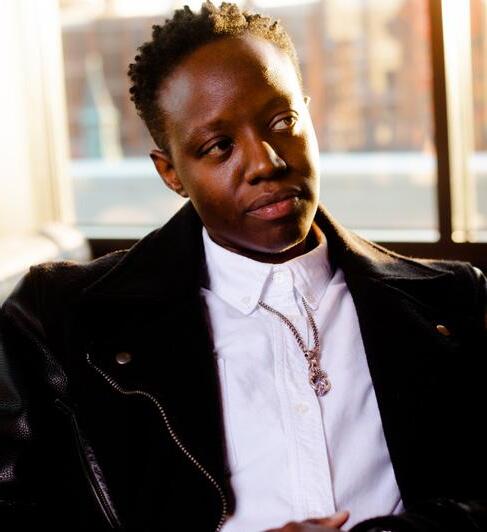
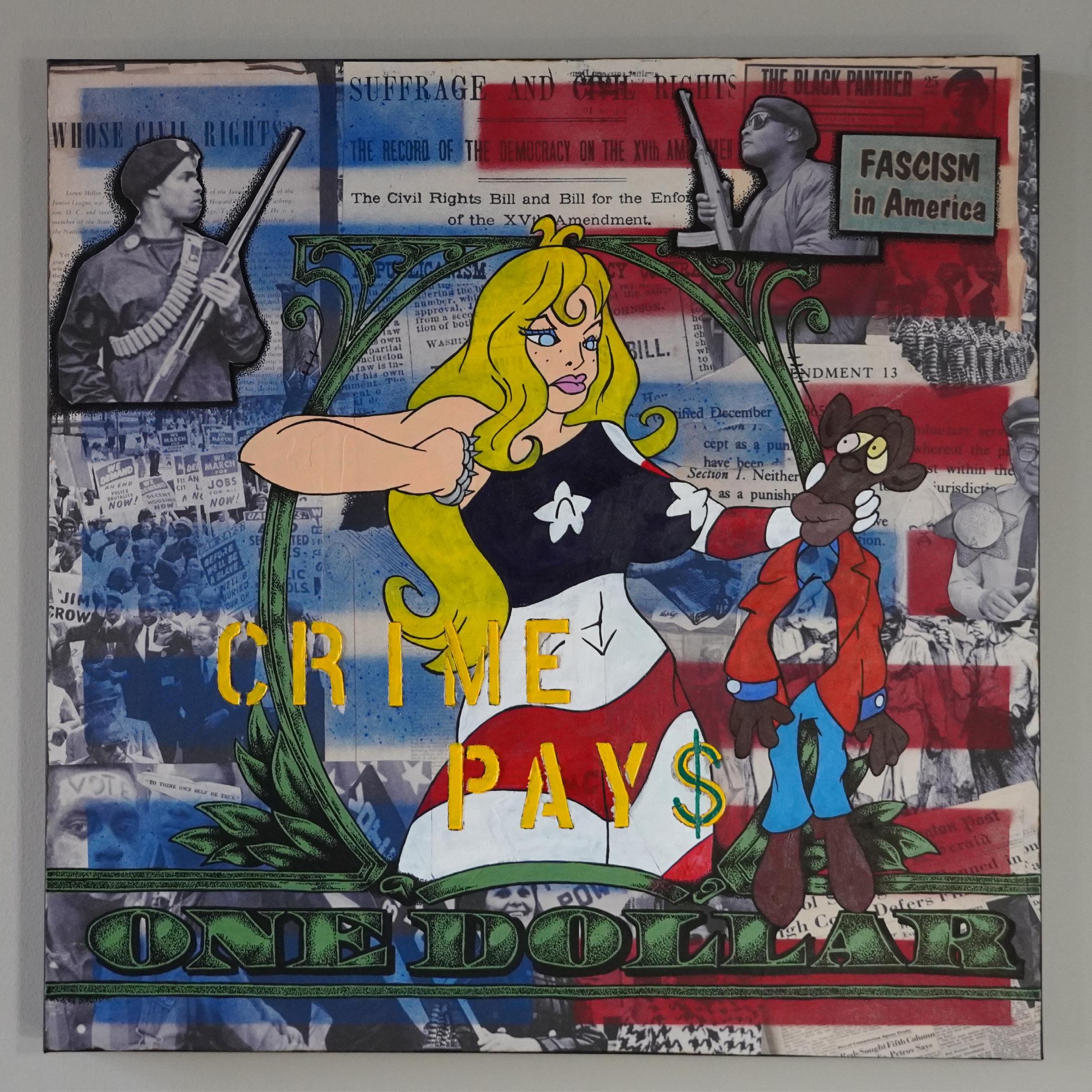
says. “The viewer must approach the work with a willingness to learn and understand.” Nic believes that true controversy in art forces thought and introspection, avoiding stereotypes by weaving layers of depth and meaning. “If the imagery unintentionally reinforces stereotypes, it may lack the depth required to be truly controversial,” Nic asserts.
Nic’s creativity finds inspiration in the world around her. “I may be inspired by a song, a photo, the cover of a magazine, or news events,” she explains. Art becomes a medium to process emotions and convey thoughts on sociopolitical issues. Through this, Nic aims to educate and spark dialogue, using visual storytelling to leave lasting impressions.
Looking ahead, Nic is excited to continue evolving her practice with projects that delve into Black representation and love.
“My next concept series, ‘Black on Black Love,’ will explore how we embody a ‘Black Love Ethic,’” she shares. Inspired by Bell Hooks’ writings, this series will examine the warmth, brilliance, grief, and resilience within Black communities. “Despite our flawed humanity, we’ve always shown up as ‘love’ for each other in our communities,” Nic reflects. Another ongoing project, the “Sold Not Told” series, continues to highlight sociopolitical issues, pulling threads from the past and present to illuminate the Black experience.
Nic’s portfolio can be viewed on her website, nicatniteart.com, or on Instagram, @nicatnite_gallery. Both platforms offer insights into current projects, inspirations, and upcoming works.
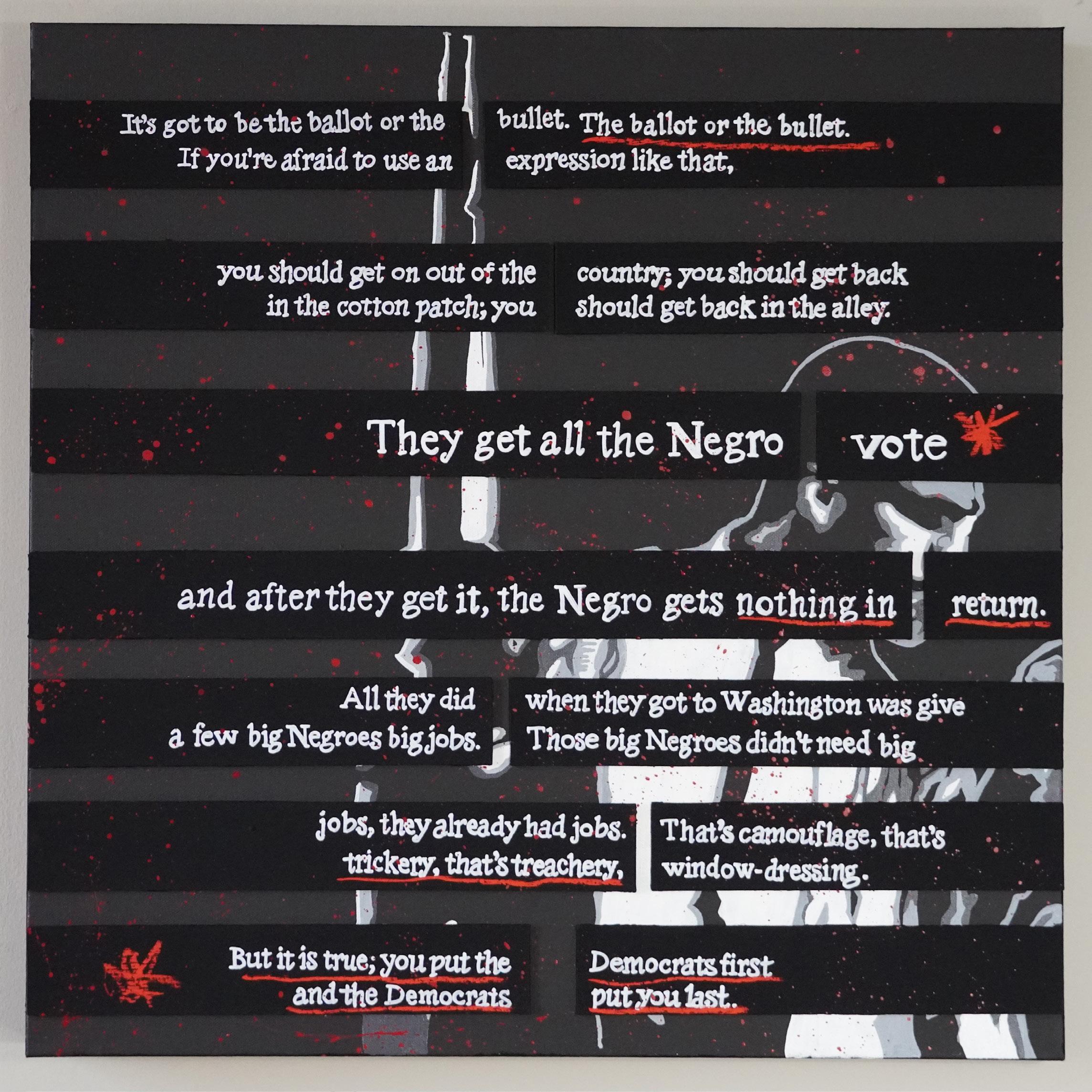

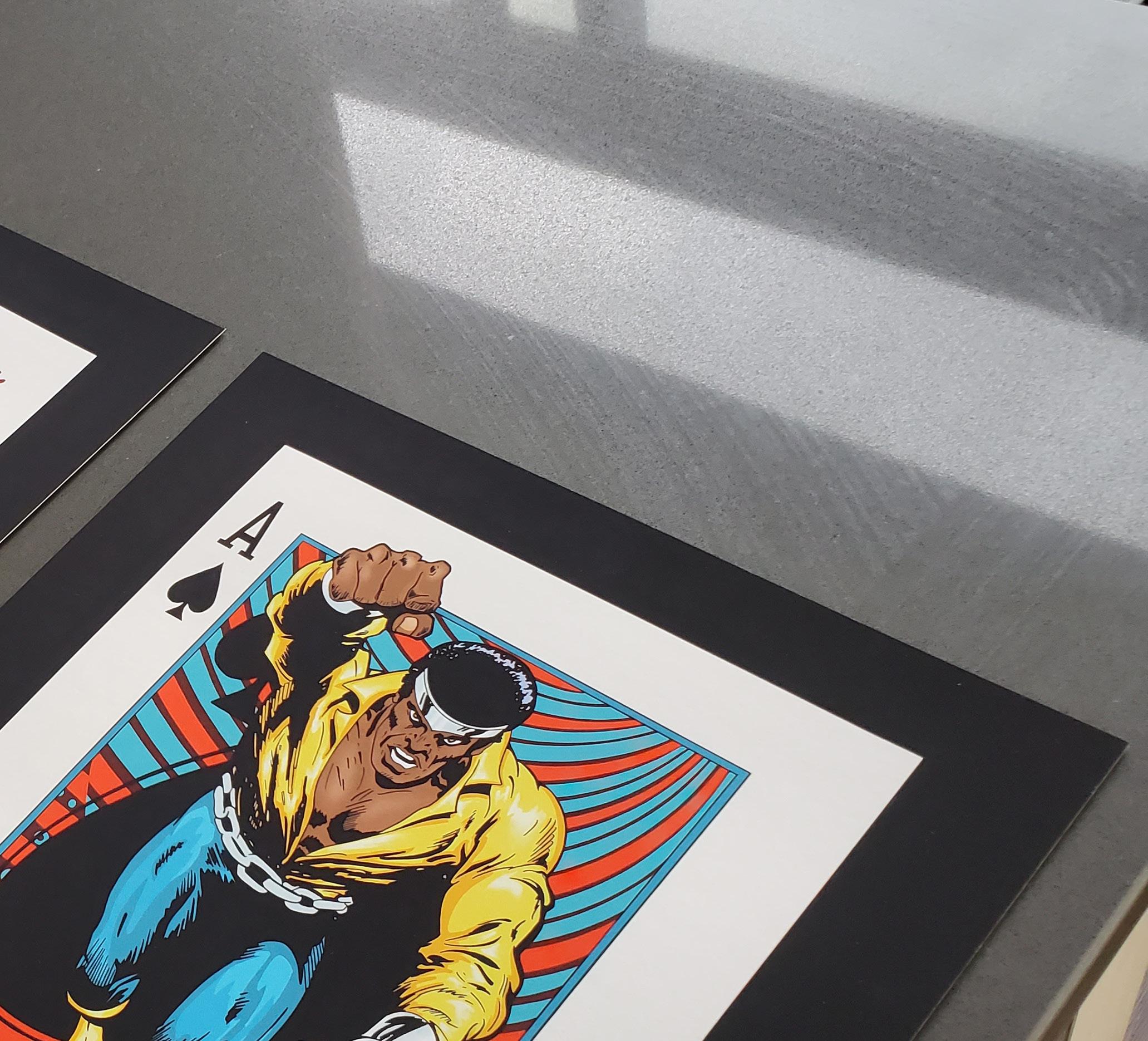



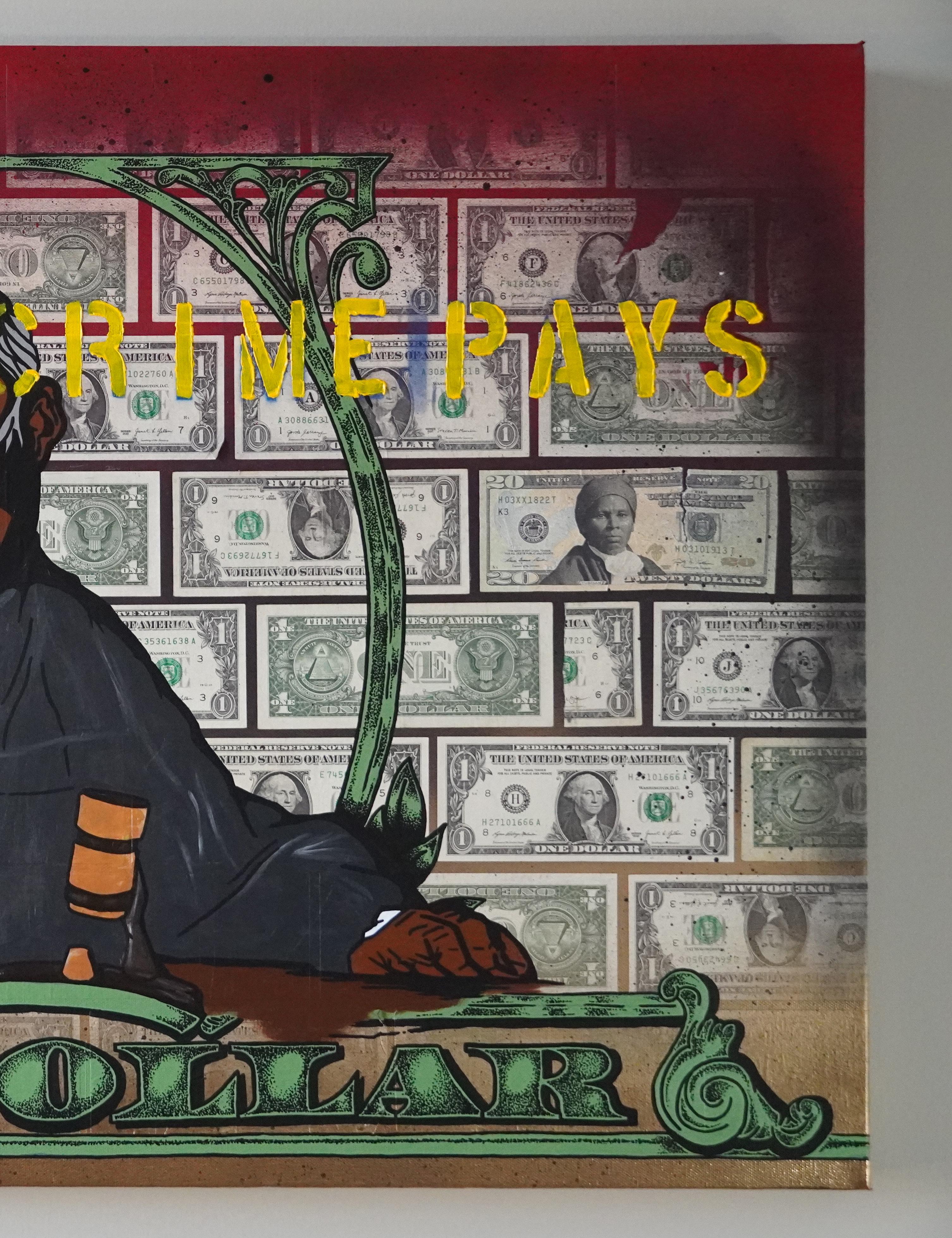
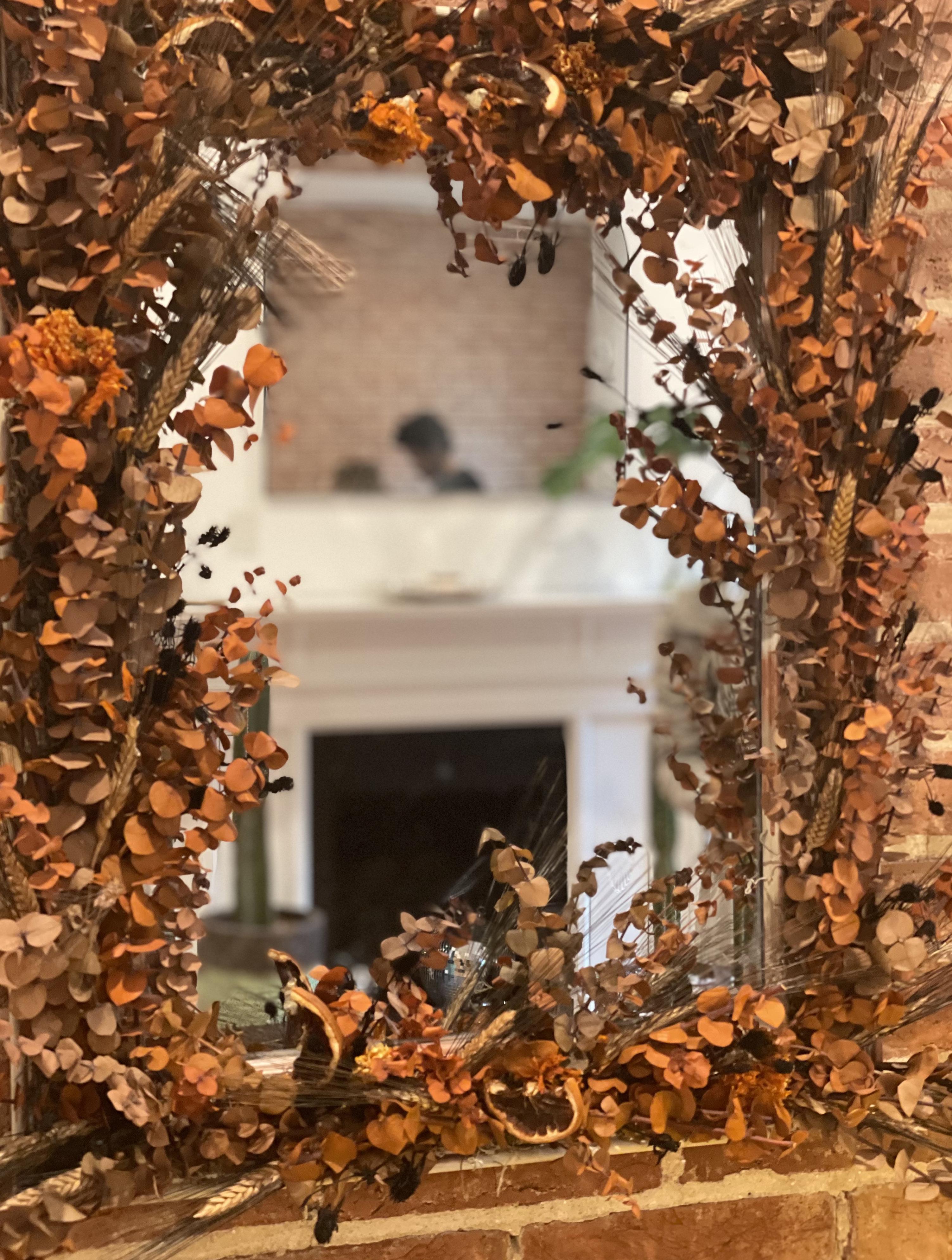
Valencia Wilson has carved a unique niche as a sustainable botanical artist. Her work transforms discarded plant matter and upcycled materials into evocative, living artworks that celebrate the resilience and beauty of the natural world. Growing up in the lush landscapes of South Alabama, Wilson’s journey into art was as organic as her chosen medium, rooted in a deep connection to nature and an unyielding commitment to sustainability.
Valencia’s artistic journey didn’t begin in a classroom but in a florist’s workshop. “I don’t have a formal educational background in art,” she shares. “My journey into the world of botanical artistry began through my work as a florist. Working closely with flowers and plants sparked a deep appreciation for their natural beauty and storytelling potential.” Over time, this hands-on experience evolved into a creative practice deeply aligned with her values. By experimenting with dried, discarded plant materials and vintage frames, Wilson found a way to express herself artistically while honoring the environment.
Her transformation from florist to artist was not an overnight revelation but a grad-
ual realization. Wilson recalls, “I became interested in art organically through my work as a florist. I was always drawn to the textures, colors, and natural rhythms of plant life. Over time, I started using flowers as a medium to express stories and emotions. That’s when I understood that floral work could transcend design and become art.”
Southern roots have played a pivotal role in shaping Valencia’s artistic vision. Growing up in South Alabama, she was surrounded by evergreen trees, dense pine forests, and vibrant tropical plants. “Being surrounded by that kind of natural abundance made it easy to develop a sense of wonder and respect for the environment from an early age,” she explains. Observing the resilience of nature in her hometown, where green thrives even in December, left a lasting impression. “That sense of resilience and beauty in nature really stayed with me,” she reflects. Today, those early experiences are woven into her work, inspiring pieces that capture both the beauty and impermanence of the natural world.
Valencia’s commitment to sustainability drives her creative process. She finds inspiration in materials others might overlook.
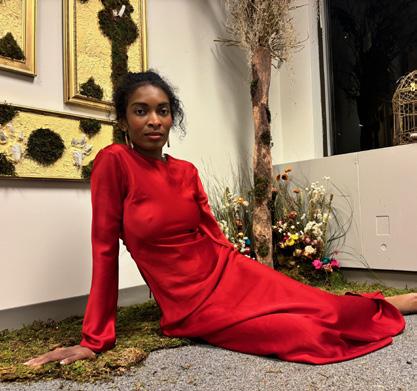
“Using discarded plant matter and upcycled materials is both an ethical choice and a creative challenge,” she notes. “I see value in what others might discard. Every component I use is chosen with intention, from dried stems to vintage frames. By reimagining what already exists, I can honor the natural world rather than take more from it.”
Through her art, Wilson hopes to shift perspectives about sustainability and the overlooked beauty in nature. “There is so much quiet beauty in things like dried petals and fallen branches. These elements tell stories of growth, change, and resilience,” she says. “I want my art to spark reflection on how much we throw away without a second thought and inspire viewers to see the potential in what’s considered waste.”
Creativity for Valencia is deeply rooted in the natural world and the unnoticed details within it. “The way moss grows on stone or how leaves curl over time fuels my imagination,” she shares. Beyond nature, her Southern upbringing and memories continue to shape her artistic lens. “There’s something powerful about reconnecting with the earth through materials that have already lived and allowing them to speak again in a new form.”
Looking ahead, Valencia is expanding her repertoire by learning skills like welding and woodworking. These new techniques will enable her to incorporate more structural elements into her art, creating larger installations with reclaimed wood and metal. “This next phase is about deepening my commitment to sustainability while challenging myself creatively,” she says. She envisions these projects as opportunities to celebrate nature and conscious design on an even grander scale.
By transforming discarded materials into masterpieces, Wilson invites us to see the world—and our role in it—with fresh eyes. Through her hands, nature’s forgotten elements find new life, reminding us that beauty is not only found in what is perfect but also in what endures.
Wilson’s portfolio can be viewed on Instagram: @plantmatter.art.





Falere Fagoroye is a visionary artist whose work delves deep into themes of memory, resilience, and the interplay between the natural and built environments. With a background that bridges fine art and architectural studies, her creations are as thought-provoking as they are visually compelling.
Falere’s artistic journey began early, thanks to an enriching K-12 education that provided robust art programs. “I was fortunate to explore almost every art medium and a range of craft techniques during my school years,” she recalls. This foundation was solidified at Mount Holyoke College, where she earned a BA in Architectural Studies. “There, I delved deeper into painting, printmaking, sculpture, and wood fabrication,” she explains, highlighting how these disciplines have woven into her multifaceted practice.
Growing up in Washington, DC, Falere was surrounded by an abundance of artistic stimuli. “I had a natural propensity towards art and design from a young age,” she shares. “Book illustrations first inspired me with their unique depictions, and frequent visits to DC’s many museums further nurtured my interest.” Public art also played a crucial role. “The murals and installations in my community, as well as those I encountered while traveling, left an indelible mark on my creative spirit.”
A hallmark of Falere’s art is her use of found and natural materials to enhance both the tactile and emotional depth of her work. “These materials bring texture and dimension, helping to make the subject more tangible,” she explains. “I’m especially drawn to objects that hold personal or sentimental value—items with stories or memories attached.” Incorporating such materials not only adds layers of meaning but also creates a deeply immersive experience for viewers, transforming each piece into a narrative-rich tapestry.
Falere’s architectural background provides a unique lens through which she views space and place. “Architecture taught me to understand space as shaped by function, identity, and cultural context, while art taught me to feel space—to see its emotional and symbolic resonance,” she reflects. This dual perspective allows her to explore the tension between natural landscapes and human-made forms. “I often think of people as living architectures—resilient, adaptive, and marked by time,” she adds, drawing parallels between human experiences and the evolving built environment.
Falere’s work often serves as a poignant commentary on issues like overdevelopment, cultural displacement, and the distortions of excessive vanity. “I begin by researching communities and places impacted by these phenomena,” she explains. Her creations act as “quiet protests or
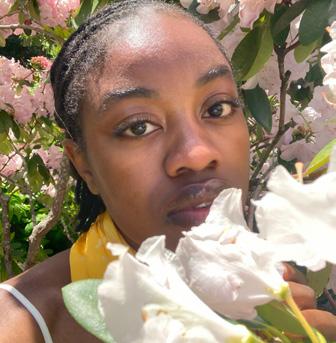
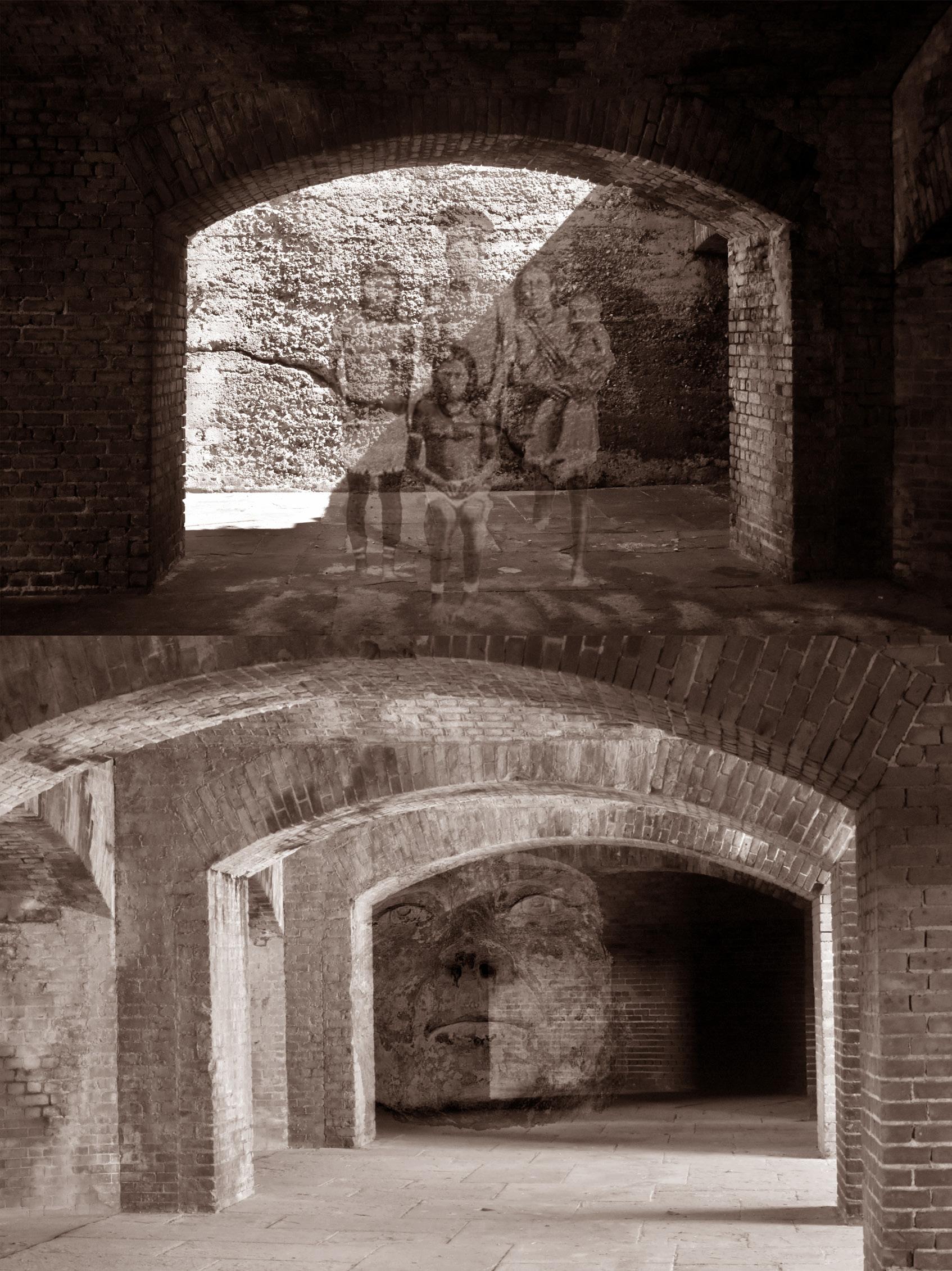
memorials,” using scale, material, and site-specificity to highlight the costs of progress and the fragile balance between growth and preservation. Likewise, she explores how vanity—whether architectural, societal, or personal—drives unsustainable change and contributes to cultural erasures. “It’s about making visible what’s often invisible,” she says, shedding light on forgotten histories, overlooked narratives, and the illusions we construct around identity and value.
Falere’s inspiration stems from a deep interest in heritage conservation and the marks people leave behind. “I find beauty in decay and in the tension between natural and built forms,” she shares. Abandoned buildings, city edges, and historic artifacts often ignite her imagination. Additionally, she finds herself drawn to the glossy surfaces of lifestyle magazines and aspirational imagery—symbols of vanity and desire that contrast sharply with the flawed environments she studies. “I’m fascinated by how we present ourselves versus what we leave behind, and even how our built environment can shape our perception of ourselves” she explains. “I’m
also inspired by the resiliency of communities and the stories that emerge from shared experiences.”
Falere’s upcoming projects continue her mission of reclaiming visibility for marginalized narratives. One project focuses on Seneca Village, a thriving Black community displaced in the 1850s to create New York’s Central Park. “Through collage and painting, I’m blending the present-day park with glimpses of what once stood there,” she reveals. Another initiative places the human form at the forefront, exploring how bodies carry memory and become living monuments. “Both projects aim to reclaim presence in spaces where it has historically been denied,” she emphasizes.
More of Falere’s work can be found on Instagram at @falereberry_studio or via her website, falerestudio.com. Her work invites viewers to look deeper, question narratives, and engage with the stories embedded in the spaces around them.


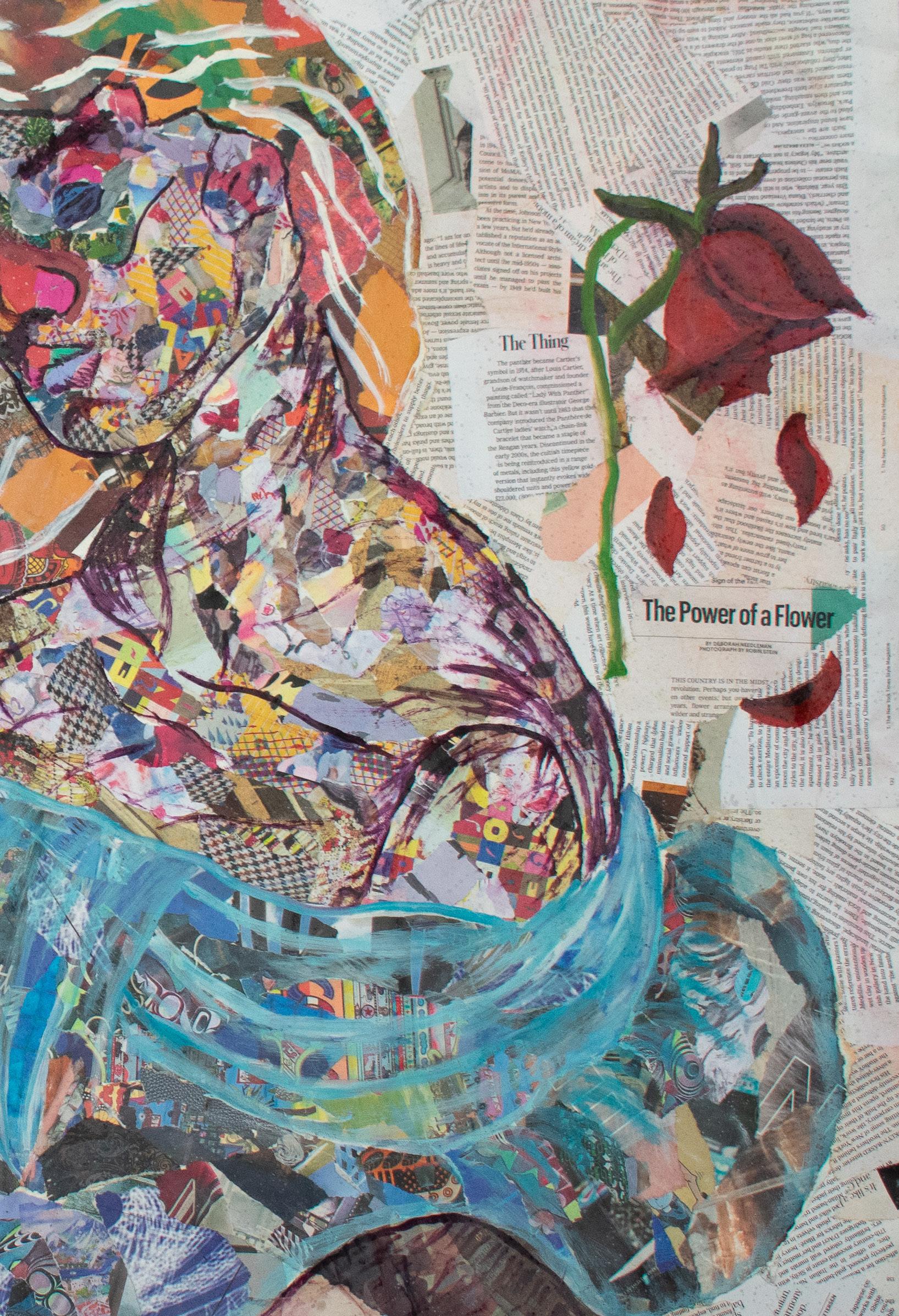

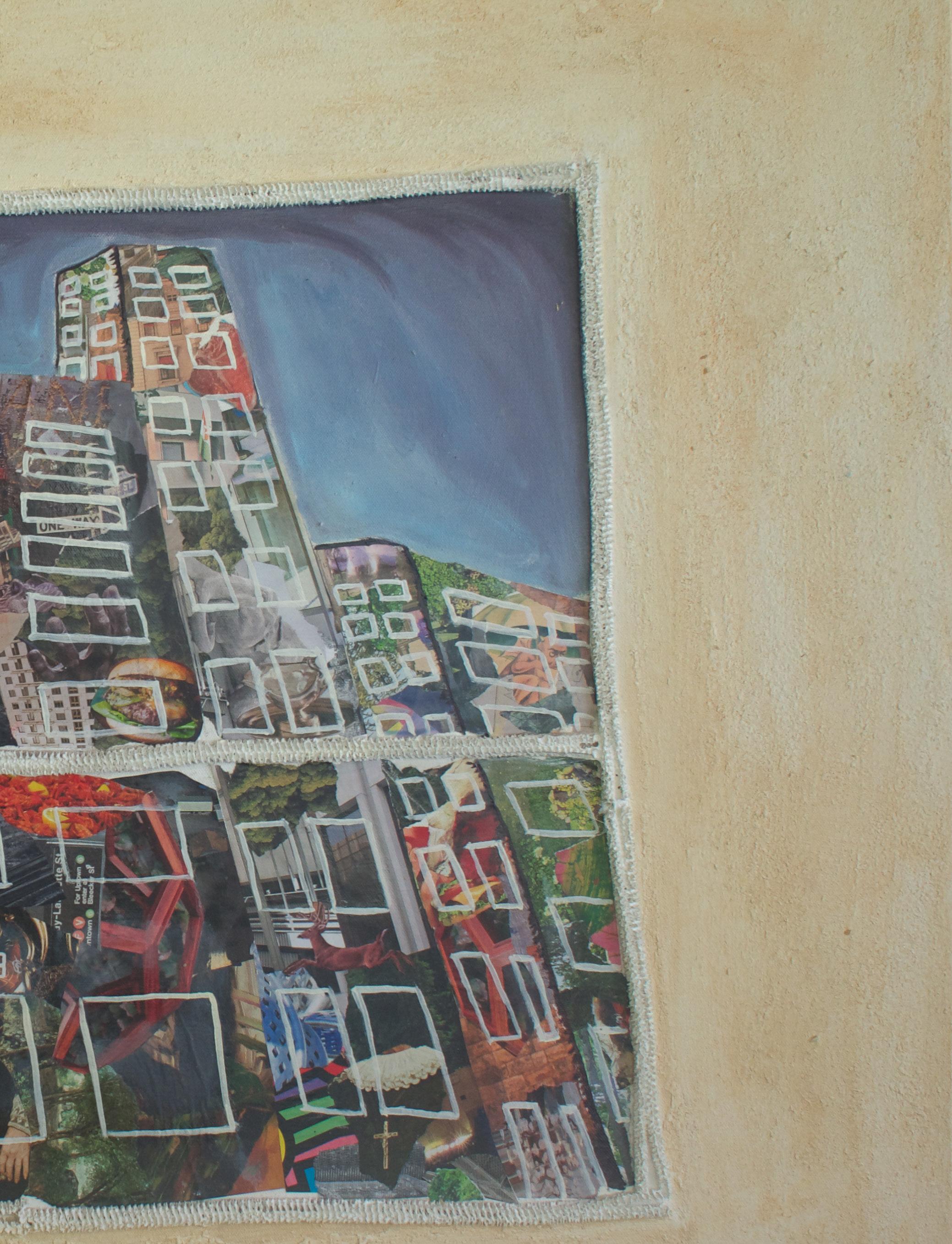
Page C2
Baltimore Museum of Art artbma.org
Page 58
Falere Fagoroye instagram.com/falereberry_studio
Page 16
Andrea Fort instagram.com/rebel_leona
Page 13
Anaya King instagram.com/always_anaya_
Page 40
Nic At Nite Art nicatniteart.com
C3
RoGallery rogallery.com
Page 24
Sloan SloansStudios.com
C4
Vika Visual Arts Association vikavisualarts.org
Page 3
The Valentine thevalentine.org
Page 50
Valencia Wilson instagram.com/plantmatter.art




